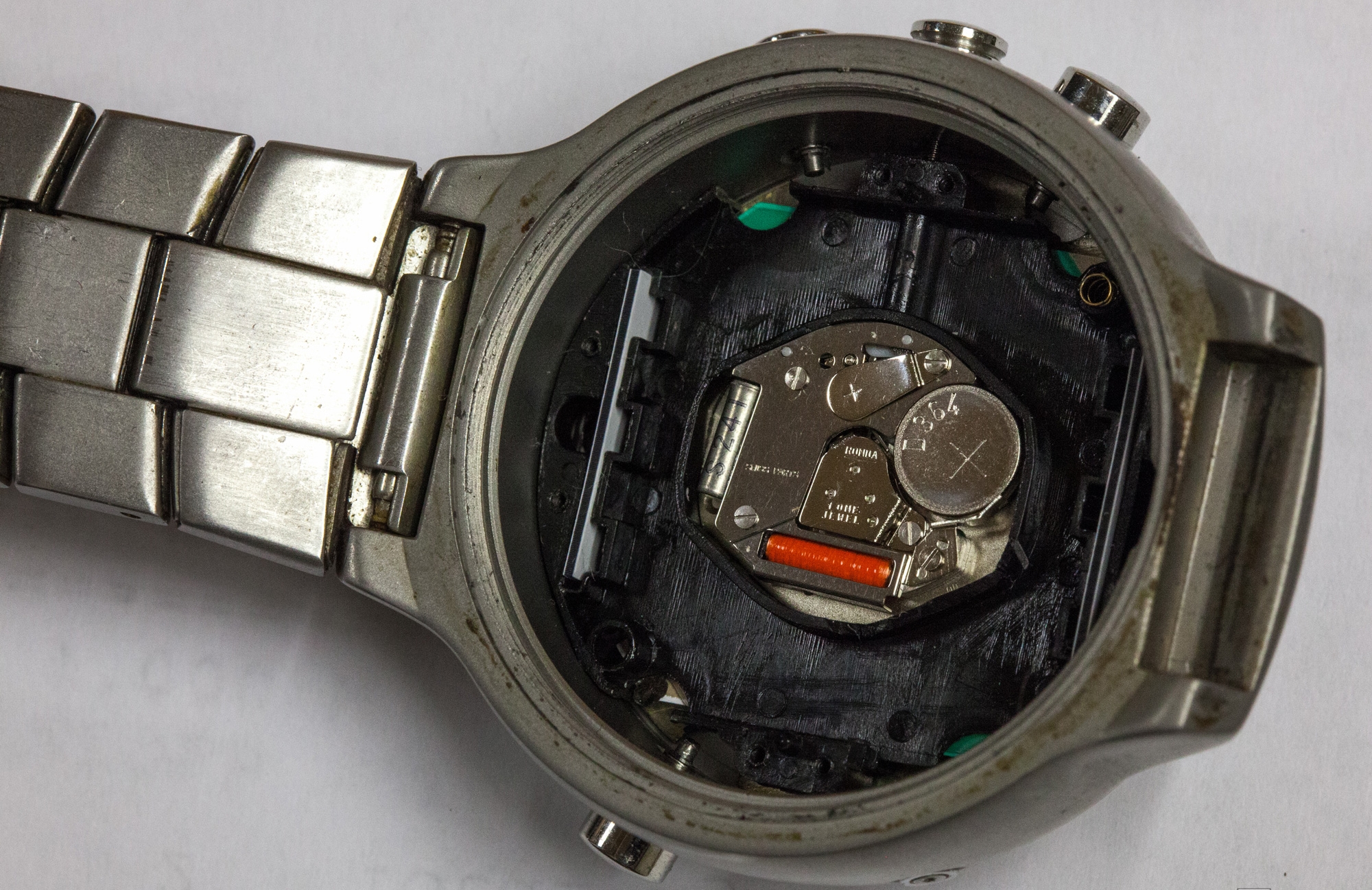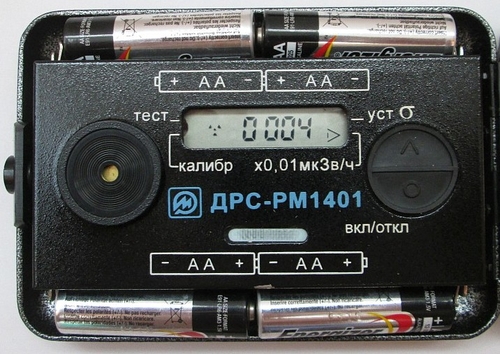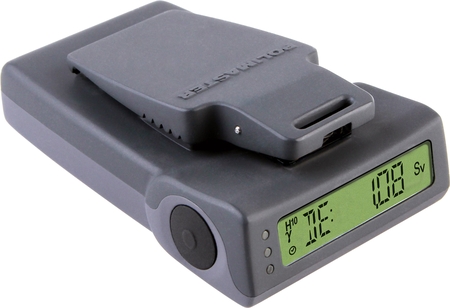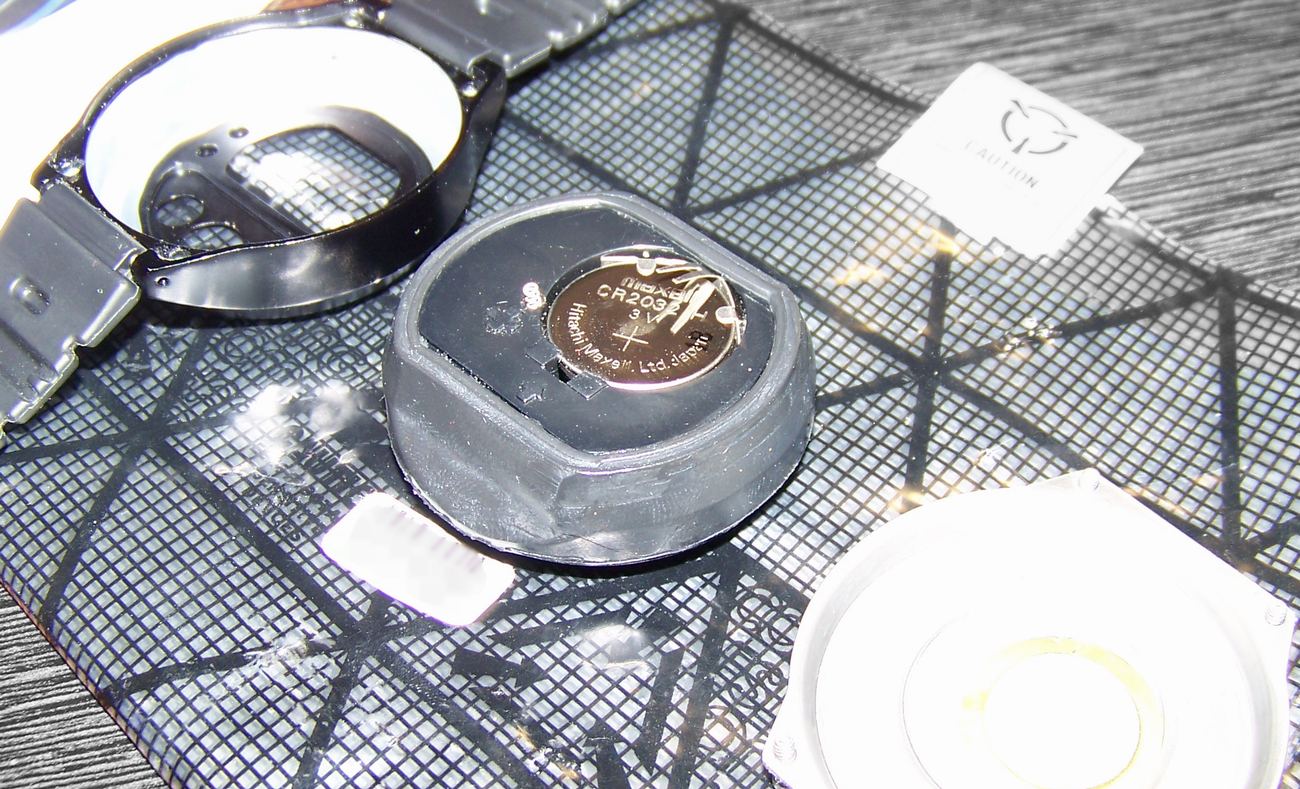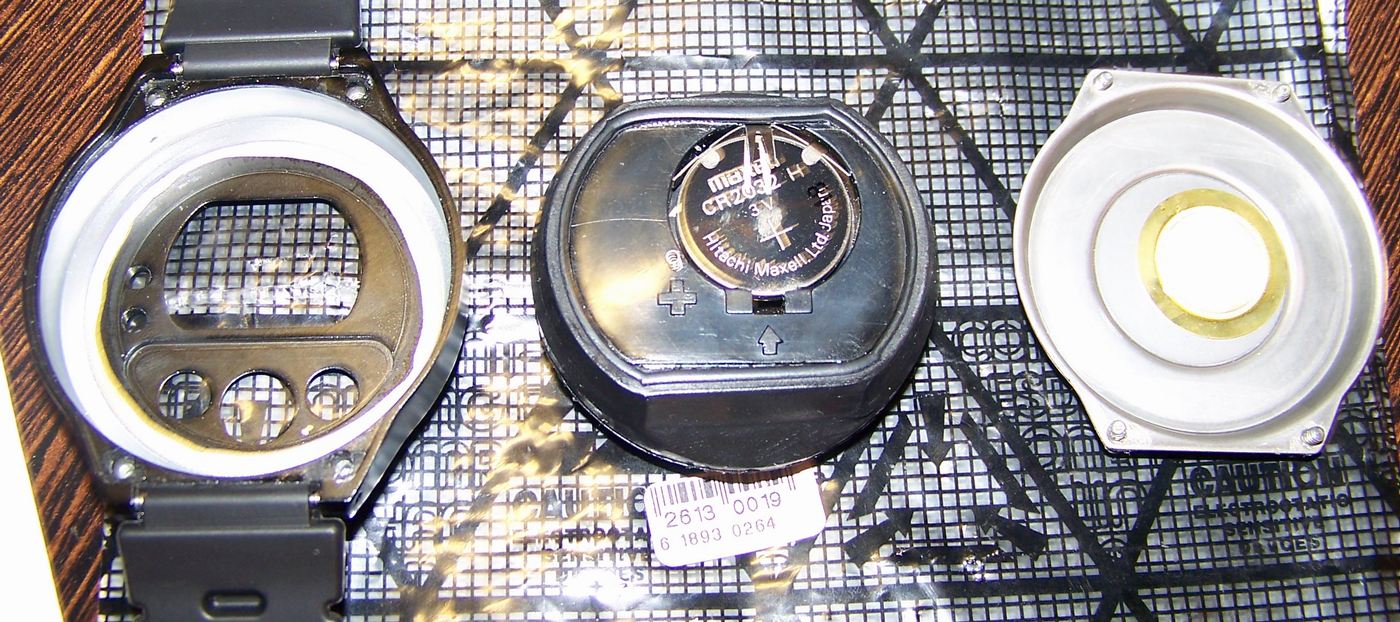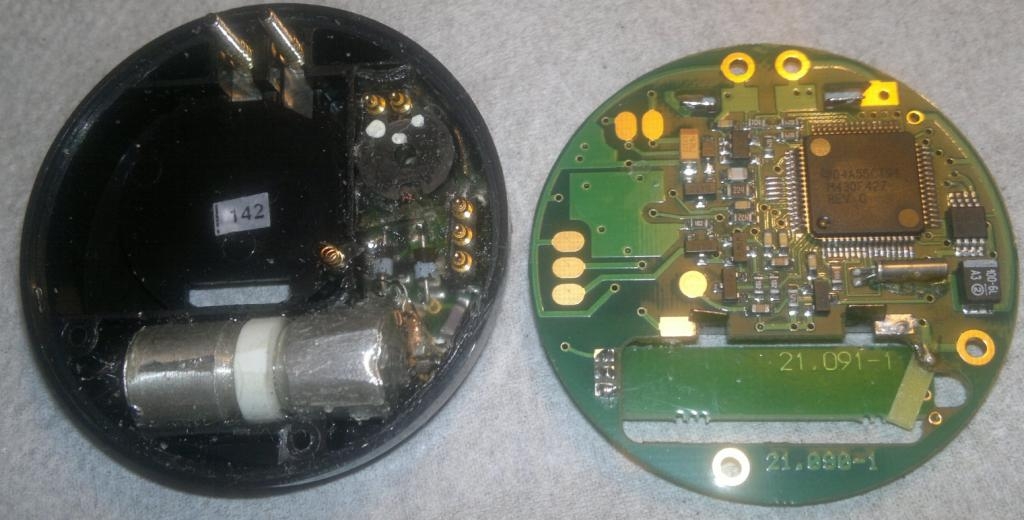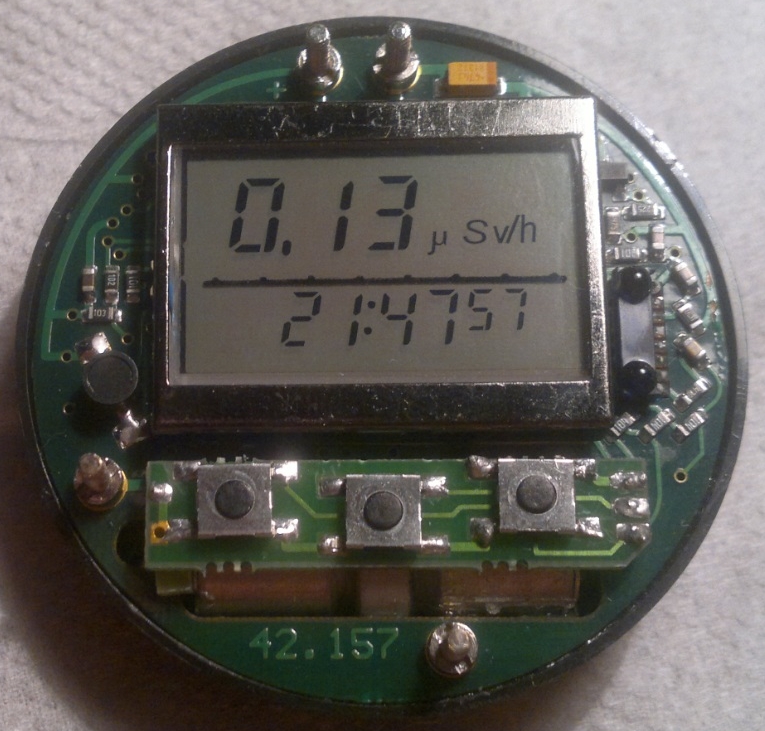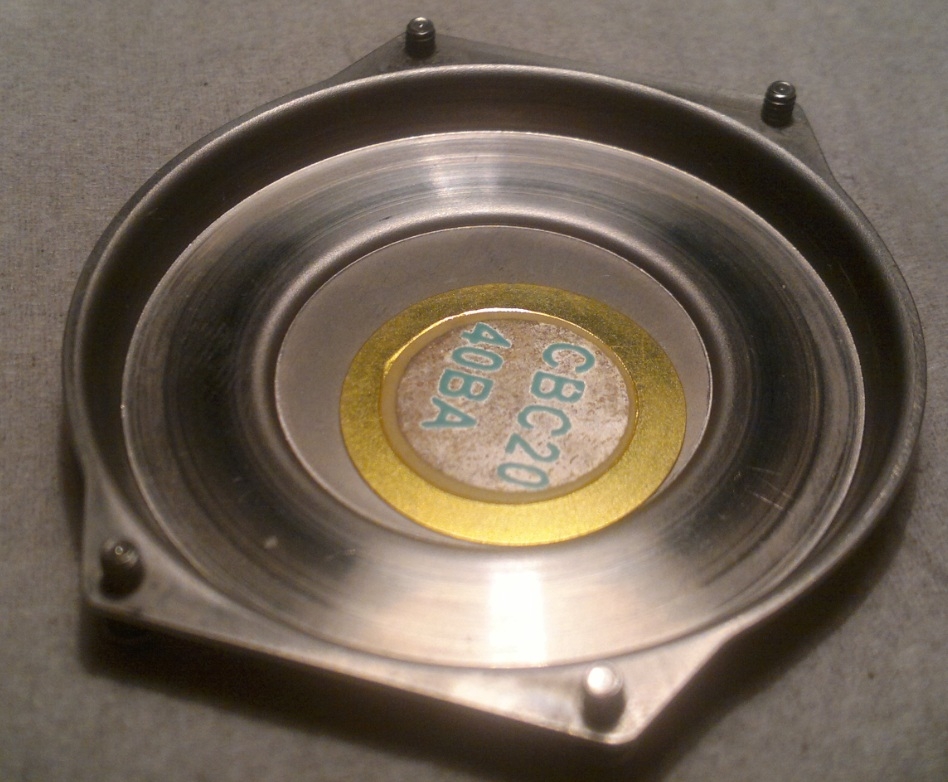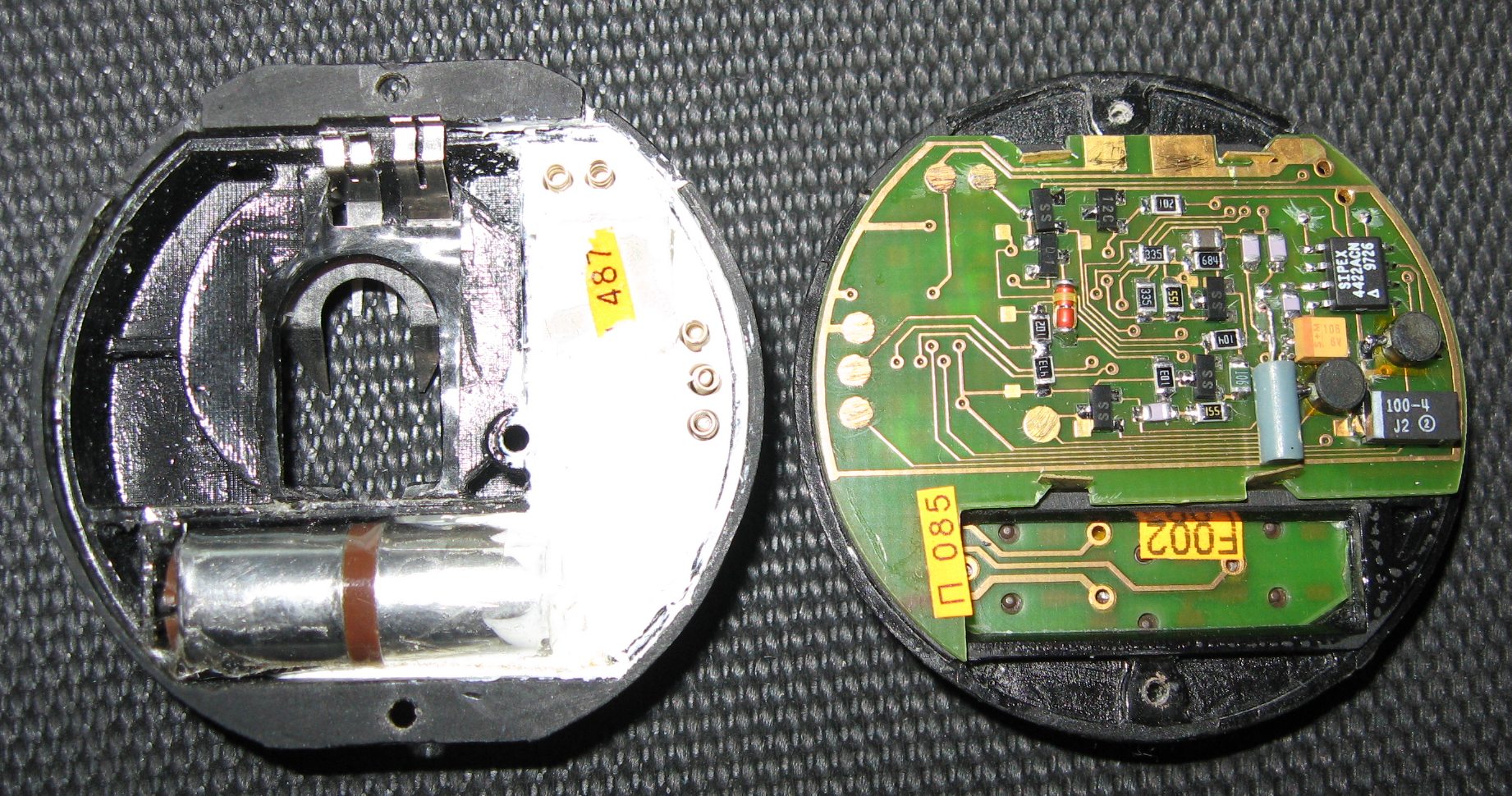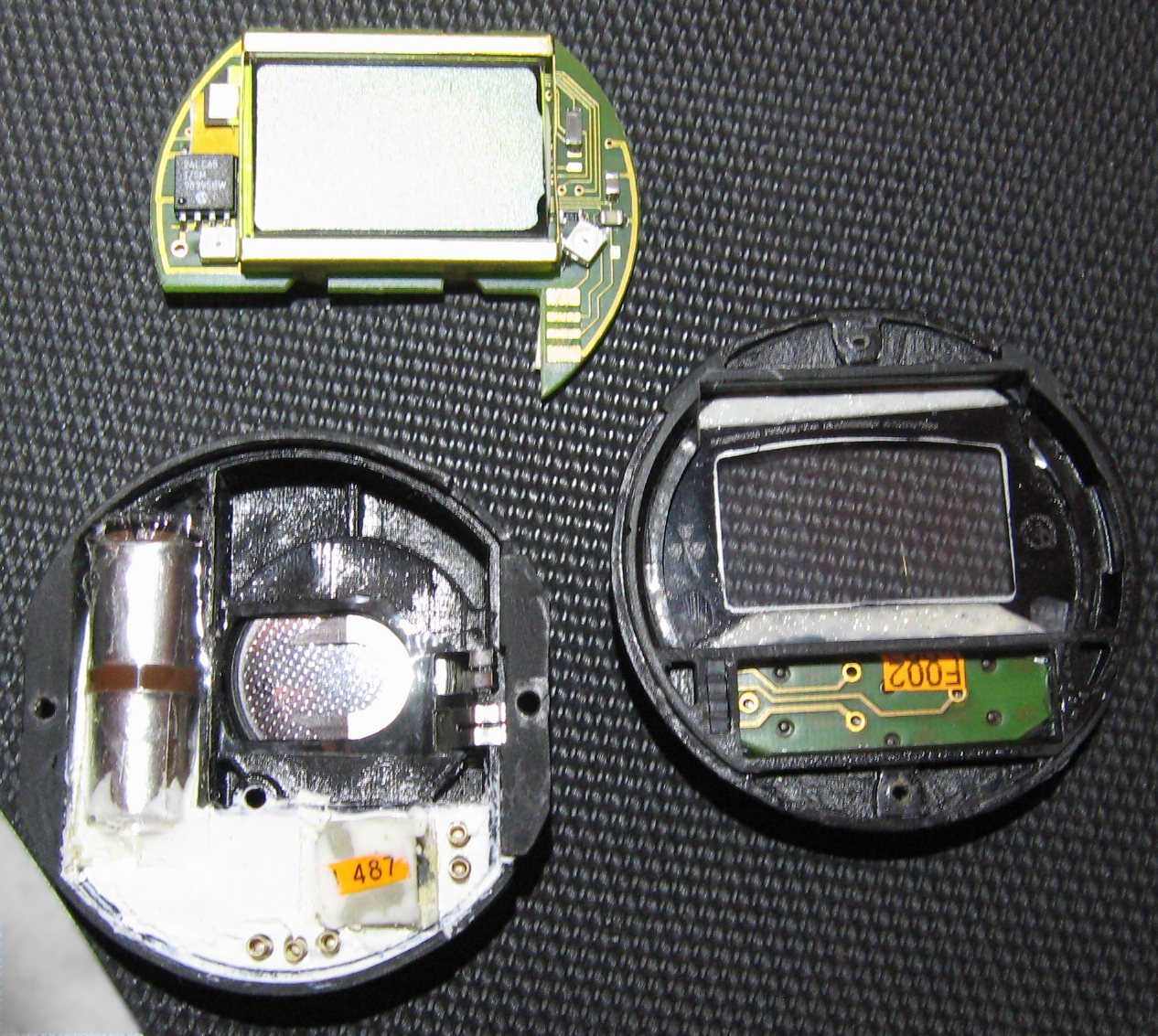Dosimeter for Seryozha. Part I. Polimaster - Nuclide Hunters
In connection with the frequent questions from friends and acquaintances with the key phrase "what dosimeter to buy? and what about you? ”I decided to gather together the information scattered in different places and tell about my instrument park and everything connected with this park. I decided to build the chronology of the story from the newest to the oldest dosimeters. I am not a physicist or a metrologist of ionizing radiation, so all I can do is simply describe my instruments and tell me why they appeared to me. All this, traditionally, is seasoned with sauce from many related areas and directions.
As once told me, the habrachitatel in the commentary to my first article - "write when the soul requires." The soul demanded. Today, under the cut, not only my story about his everyday portable dosimeter, but also the story of a person’s life, thanks to which this dosimeter was born. About what will happen if tourists start collecting appliances ... Attention ! long read :)
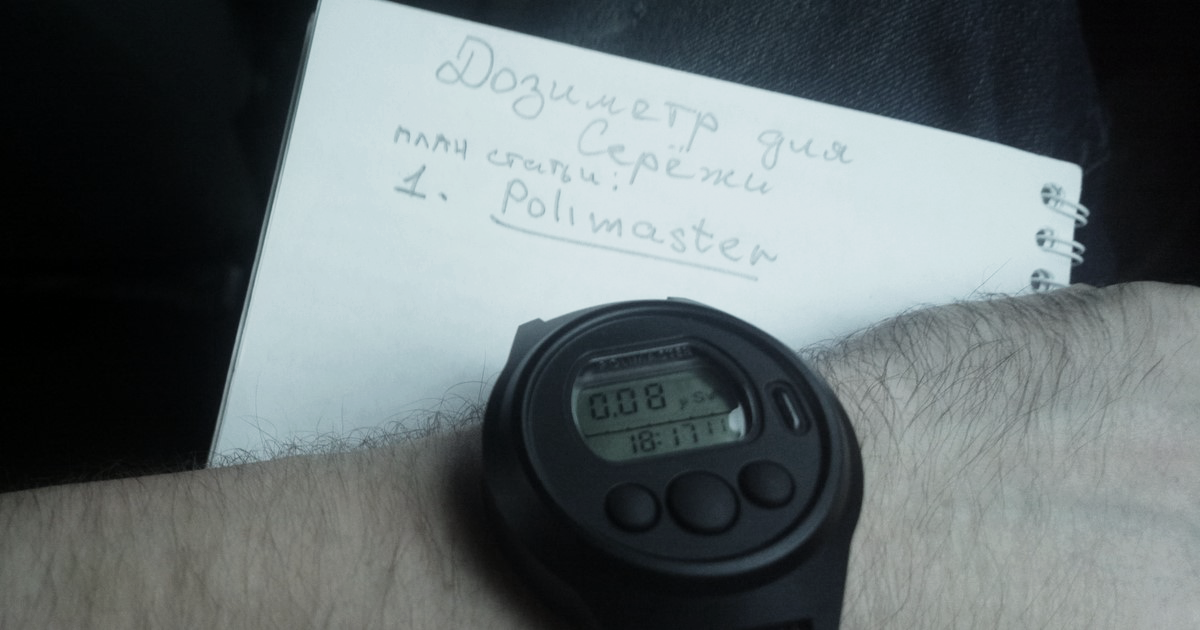
As a student, I often discussed various engineering / dosimetry issues with the old employees of my “home” department of high-energy chemistry (which later became just the department of radiation chemistry). And often men criticized Soviet dosimeters, the ubiquitous Geiger counters (“STS-5 can be gathered up in a landfill ...”), praised DP-5 (“only in case of a nuclear strike and overdoses”) or the rare “Pripyat” dosimeter (" ... the upper limit of 20 micro-roentgen is small, and so an excellent device, "etc. etc. ad infinitum). Naturally, questions were raised and various interesting homemade products. And one day, one of the “radio companions” inadvertently cast a phrase about “a group of initiative comrades from the instrument-making industry,” creating just some incredible ultra-miniature and ultra-sensitive devices for radiometry. Further questions led to disputes over whether these guys left for America or they haven’t yet given any objective information, but this is the first time I heard about the “main inventor from the Moscow Institute of Scientific and Technical Information”, the legendary Alexander Alekseevich Antonovsky.
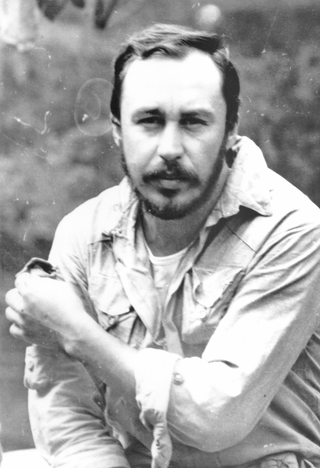
It is known that where art and science combine, a miracle is born there. If we talk about miracles applicable to dosimeters, then all roads will lead to Polimaster . This Belarusian company abroad is known much more widely than in its native Belarus. And in principle, we can safely say that among people associated with ionizing radiation there is no one indifferent to its products (they traditionally admire quality and hate prices :)). Here I am, having heard stories, having read forums and user reviews, I became a fan of this company long before I learned about the fact of its production in Minsk. After all, even now I periodically hear different semi-mythical stories about “devices from Polimaster”. With a high degree of probability, if someone talks about some kind of unusual dosimeter (unusual form factor, unusual detector, unusual sensitivity, price, etc.) - in the end it turns out that there’s a stigma somewhere down there on the tidy Polimaster An amazing example of a manufacturer whose products reminds me of flashlights from Zebralight :) ("a flashlight for $ 100 ?? what are you? !!"). But the one who at least once appreciates the iron of such "manufactures of like-minded people" - then he will never be able to switch to something lower than class.
Somehow in my school years I had the opportunity to read the remarkable book of V. Nemtsov “Invisible Ways. Notes of the radio designer . " It describes an inventor-radio designer who tried to place the radios wherever his arms could reach - from a matchbox to a ring. So the founder of Polimaster, A.A. Antonovsky - IMHO, he is the sameWizard of the Emerald City, a constructor, only in his role as a "radio receiver" does a dosimeter appear. So, may the reader forgive me for having too much aspiration, but let this article be a reminder of a wonderful person whom I didn’t know personally, but whose life path can be a role model for every Belarusian.
Alexander Alekseevich was born in Minsk in 1951, grew up without a father, whom he was replaced by his grandfather, a professional icon painter. In 1968, Alexander graduated from secondary school No. 20 in Minsk and began working as a technician at the Minsk Electromechanical Plant (the same “Agat”). Combining work with training, the future Master enters the evening department of the Faculty of Radio Engineering of the Minsk Radio Engineering Institute (now BSUiR). The second-year military registration and enlistment office found the successful AA by surprise, but nevertheless it did not hinder to fully repay the debt to the Motherland in the “stronghold of the Belarusian Republican Chemical Binch Plant” - in the training of the military unit in Pechi, near Borisov.
In this, to put it mildly, unusual place, Alexander Alekseevich not only managed to acquire the cunning military specialty “Class 3 Chemical Degasser”, but was also awarded the medal “For Military Valor”. After the army, there was a reinstatement at the institute and the position of an employee of the department for the development of measuring equipment of the Minsk Scientific Research Instrument Engineering Institute (MNIPI), where yesterday’s "fighter of radiation, chemical and biological defense forces" was formed as an engineer-inventor and practicing researcher. Having proved himself to be excellent at the Moscow Institute of Information Technology, however, on his own initiative A.A. transferred to the post of head of the department of the Special Design Technical Bureau (hereinafter referred to as SKTB) of the Ministry of Trade of the BSSR (since November 1978), where he met Anatoly Afanasevich Gulidov (a nuclear physicist whose efforts made SKTB appear in the light of day), which had the “sick” Kirilian effect and infected by this young engineer.
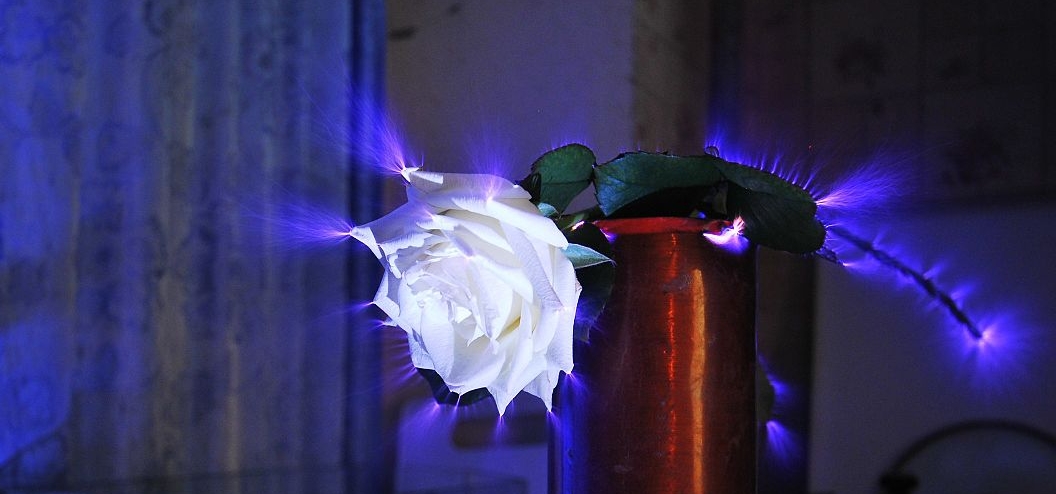
It is in the person of this person that Alexander Alekseevich finds a like-minded person, colleague and teacher. In SKTB, the main focus of research was the development and implementation of ozone-ion technology for the needs of agriculture of the BSSR. Antonovsky was the chief designer of the project for the development of an ozone generator and its accompanying aero-ion spectrometer and an ozone meter for agricultural needs. True, after the sudden death of A.A. Gulidova, the psychological atmosphere in the design bureau has deteriorated significantly (not without the influence of “top-appointed managers” trying to establish their own rules) and after working there for only a year, in 1980 Alexander Alekseevich returned to his native MNIPI, where until 1990 he worked as head of the sector.
It was these 10 years that became significant for the development of Antonovsky the inventor, because it was then that dozens of inventions were patented, which led to the all-Union recognition of the author and the assignment of the title of “Inventor of the USSR” to him. In the late 80s and early 90s, it was already clear that the USSR did not exist long. For many high-tech enterprises, the inevitable decay process has begun. Anticipating the changes, in 1989 A.A. first headed the Creative Team "Master" , and then, in 1991, the Small Scientific and Production Enterprise "Intermaster" , where the production of "folk" dosimeters "Master-1" was started. As the winner of the Ministry of Industry Competition for an “Express Dosimeter”, this development with minor variations was subsequently carried out at five plants of the USSR (in Minsk - NPO Gorizont) and was released in more than a million pieces. With the departure of A.A. in free swimming, the "national dosimeter" became known as personal dose meter PDM-2

These compact, cheap and maintainable devices deserve special attention and in the next parts I will definitely dwell on them. Already for one "master-1", Alexander Alekseevich could put up a monument ...
Many people have a question about the origin of the company name. In fact, everything is quite simple here. The word "master", according to Antonovsky, was not directly related to mastery as such, but simply repeated the name of the beloved literary hero from Bulgakov's "Master and Margarita." Well, it sounds the same in different languages of the world. And “inter-” - the prefix popular at that time, meant the desire to enter the international level. Later, in 1992, the joint Belarusian-Polish enterprise Polimaster was created by eight instrument-builders, where the international gave way to multifacetedness (“poly-”). This year (and February 28th thereof) is officially considered the date of birth of the company. The first contribution to the charter capital of the young company was personal old Lada- "penny" (VAZ 2101) Alexander Alekseevich worth about $ 800. And a long journey began, with the search for components, a natural exchange of radio parts, self-delivery of dosimeters collected on the knee to the Hunter and Fisher stores, and many others, when often there was not enough money even for food and the situation was saved only by the old stew supplies reserved for tourist trips . As a result, the crucible of the 90s forged a world-class vigorous company from semi-handicraft production, writing about which, without any frivolities, is an honor for me.
Despite the fact that the theme of sports tourism does not fit the theme of Habr, I would like about the role of this phenomenon in the life of A.A. Antonovsky mention. Who will write about a tourist-vodnik better than a tourist-vodnik ...
I have repeatedly visited the idea while writing an article, but how would Alexander Alekseevich’s life develop if there weren’t sports tourism in his life. Would you have the strength to go through the service in the USSR-ovsky "Pecs"? To monotonously collect individually the first "masters" of "matches and acorns" in the conditions of the "dashing 90s"? A person far from sports tourism (sports (!), Where the main thing is overcoming obstacles) often thinks that a categorical trip is something like a trip to Egypt on all inclusive, only with a backpack and an ice ax. But I know for myself that having crossed the threshold of a high category, or hanging on the insurance over the abyss, then many unsolvable “city” problems and cases seem so miserable and inconsequential ... Sports tourism gives you an incomparable hardening and thirst for life. Repeatedly, returning from another campaign of my own spiritual intensity, I thought that if I were the director of a certain company, I would only recruit employees with ranks who were straightforward and firmly believing that only heaven was the only insurmountable obstacle for them.
I’ll add on my own that any real group in a sports campaign is a ready-made “ hacker / hustler / hipster ”, and it remains only to scale properly to solve a business problem.
In the life of A.A. tourism appeared (as probably with many students of the 80s) back in school, with the first trips under the auspices of the local tourist club. Moreover, the main focus was water tourism (a thing, admittedly, not as hyped as mountain tourism).
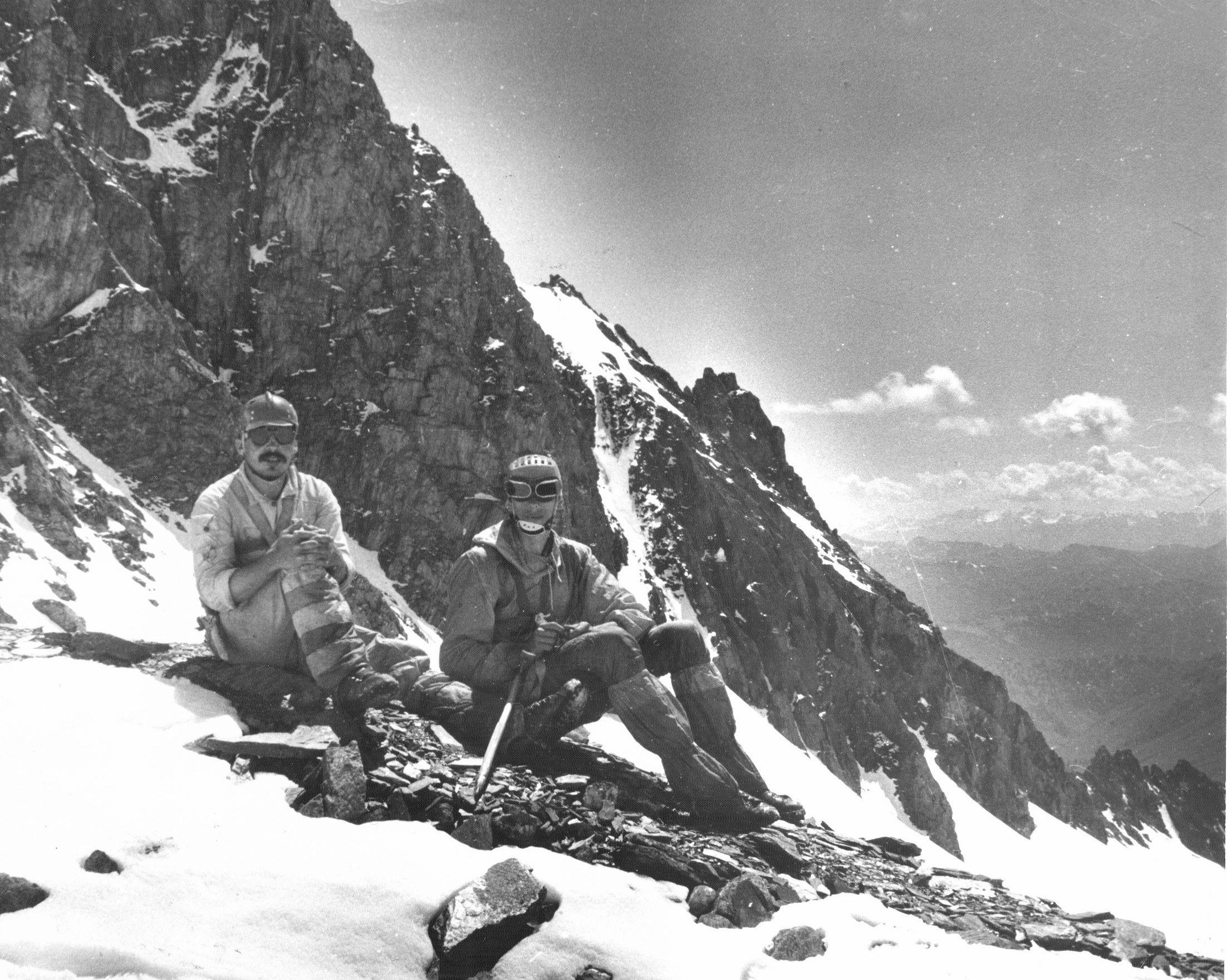
Therefore, it is not surprising that A.I. He continued to actively engage in his favorite hobby - alloys. Moreover, having the technological capabilities of the research institute, one could afford not only to repair the Taimen at the highest level, but also, I think, to tailor the catamaran to order (although Alexander Alekseevich did not trust anyone to assemble his equipment, he did everything himself, from finding the right one “ theses ”, before sewing hermetic bags).
How can one not recall the stories that are still circulating in narrow circles of Belarusian water companies - about “gift Taimen from titanium”, which were produced for especially dear guests at the experimental plant at the Research Institute of Heat and Mass Transfer (if anyone knows how it really was - tell me on the PM). I suppose that the situation in all engineering research institutes was the same (= we do the best equipment ourselves).
And the equipment would have to be of the highest quality, for A.A. in the choice of routes on trifles was not exchanged.

The track record includes the training rivers Kura, Kamchatka and Katun (a mixed mountain-trekking trip, the water part - on rafts PSN-10).
Of the serious hikes, one can mention the rafting on the Kitoy River (1982):

There is also an alloy-first ascent of the Indigirka River, as a result of which A. Antonovsky fulfilled the standard for the title of Master of Sports in sports tourism. By the way, the most often “mentor” in Alexander Alekseevich’s water trips was the legendary Belarusian waterman - A. Bogdanovich, who is often described as “trained masters of sports more than anyone else in the BSSR”.
The most serious test for A.A. became the Altai river Bashkaus, which is one of the most difficult of the rivers traveled by tourists in Altai, and its main tributary, Chulyshman. The Bashkaus is complicated not only because of its extreme saturation with obstacles (their total number is 214 with the length of the rafting part 195 km), but also psychologically: the most serious and dangerous rapids are concentrated in 7 canyons and the impassable Lower Gorge.

A group of Belarusian tourists had to storm this Altai stronghold twice (unsuccessfully, in 1984 and successfully, in the fateful 1986). Interestingly, one of the attractions of this river is the so-called. “ Guest books of Bashkaus ”, a collective document consisting of records of tourist groups that walked along the Lower Gorge of the Bashkaus River in 1986–2004. Fiction is not for the faint of heart. I look through modern photographs of the Bashkaus rapids from tourist reports and, honestly, it gets colder in my chest when I imagine myself in a catamaran carriage. As seasoned watermen say, “Bashkaus - the level of champions of the USSR”. So, the most interesting thing is that in these chronicles there are marks of the Antonovsky group (!):
It is not surprising that with such experience behind him, from 1985 to 1987, Alexander Alekseevich was chairman of the Republican and Minsk regional IWC for water tourism. Now we, Belarusian tourists-water guides, are letting out in alloys those whom Antonovsky once let out.
The assault on Baskaus turned out to be the most serious test (possibly also because the campaign took place in July 1986 , and his wife and two young children remained at home). After this trip, the activity of A.A. in the field of water tourism, it began to decline, most of the efforts were taken over by "dosimetric concerns", and then concerns about the future of the company(as well as the Chernobyl accident, the collapse of the USSR, the dashing 90s, it is clear that there was no time for tourism) .
Alexander Alekseevich organized his last serious sports campaign for his 50th birthday and celebrated his birthday in the Himalayas at an altitude of 5500 meters in the base camp of Everest, visiting Nepal with his daughter Lyudmila.
Unfortunately, in 2006 the life of A.A. broke off. But, the Himalayas did their job - lit a flame in the right heart. Now the head of the company is now Lyudmila Aleksandrovna, who not only took the lead, but also preserved her father's love for sports tourism, albeit in the mountainous form.
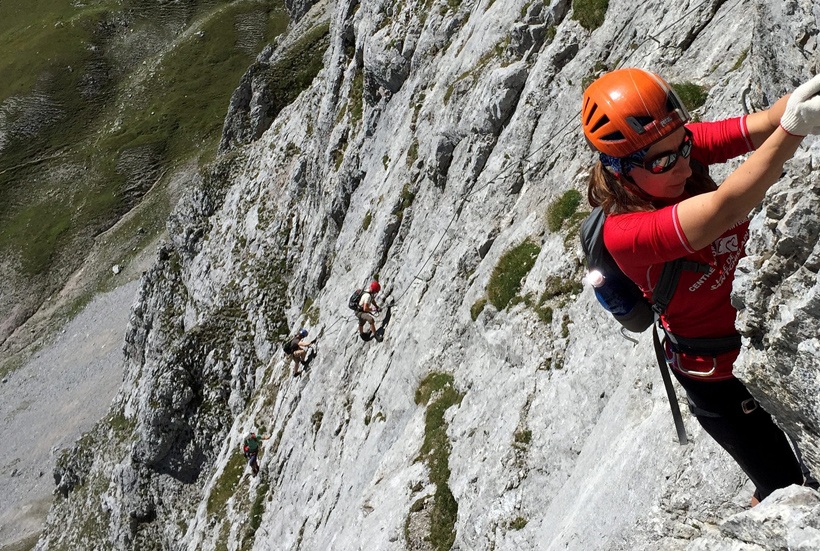
Unlike his father-waterman, Lyudmila is an experienced mountaineer with Fuji, Mont Blanc, Matterhorn, Cala Patar, Elbrus, Kilimanjaro, Aconcagua (personal record) on his personal track record. etc.This year, by the way, a group of “Belarusian hardware” with their “iron lady” noted in Kazbek. And ... for many years now, every climb of Lyudmila Alexandrovna to a symbolic peak - is dedicated to her father ...

As much as I would not like to write about the rapids, peaks and people "conquering themselves", the article is all about dosimeters, because it was they who became the work of their whole lives now Antonovsk them and thanks to them I learned about the existence of wonderful people.
As correctly noted in the quote from the book of Yu.A. Vinogradov (by the way, it was he, in 1990 on the pages of the AiF, published the scheme of the simplest dosimeter for the whole USSR, having almost paid for it with his freedom) it is best to work with radiation “with open eyes”. The dosimeter traditionally acts as these very eyes. The market of dosimeters in the USSR is a rather narrow, and even generally forbidden (for some time) niche. And since most of these devices were built on the basis of a Geiger-Muller counter (which is "a hundred years old at lunch"), most often enough power elements (ala Krona) were required for power supply, and the circuitry of a typical dosimeter could fit only in a case of considerable dimensions. If you ask your friends and acquaintances the question “describe how do you imagine the dosimeter?”, The answer most often is “a box that hangs on its side and a long bar” (watched the HBO film “Chernobyl”
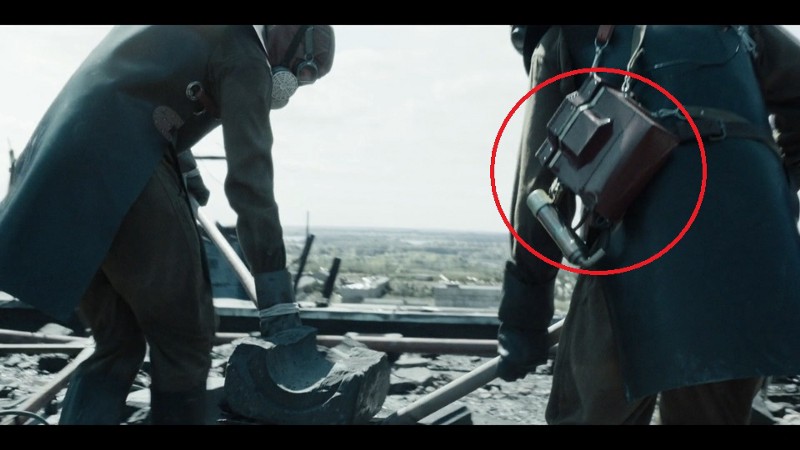
or the “red box on Krona” (who did not watch the film “Chernobyl” from HBO, but who lived in Belarus / Ukraine in the 80–90s).
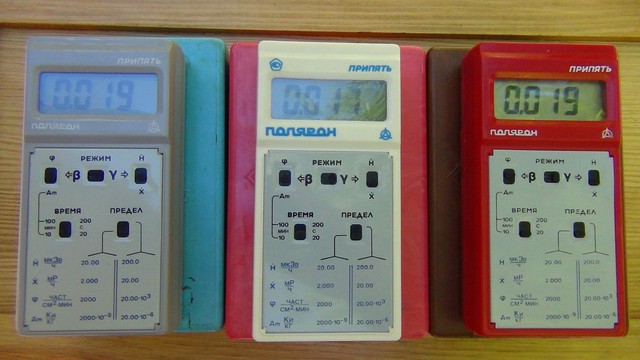
More advanced can remember modern Terra, ISS, etc. etc., which seem to be smaller, but still require attention to themselves (and most importantly, every time you need to remember to take it with you ). For a long time I decided for myself that the most convenient form factor for an everyday dosimeter is a watch, which is always at hand.
It is worth recognizing that the Soviet engineers first thought about this as far back as 1954, when the Rocket Launched Petrodvorets Watch Factory tasked to combine a watch and a dosimeter in one watch case. Apparently, “from above” they decided how to encourage such conquerors of a peaceful atom, as from a mosaic on the wall of the Institute of Nuclear Research of the NAS of Ukraine:

Encourage, expected for the USSR, decided to watch. But not simple, but with a certain bonus (if one of the readers had access to this miracle, I will be glad to hear about the TTX of the built-in dosimeter in the comments). Apparently, something went wrong, because the circulation of these mechanical watches is minimal, as people who are knowledgeable at the given time write , only one watch instance is known.
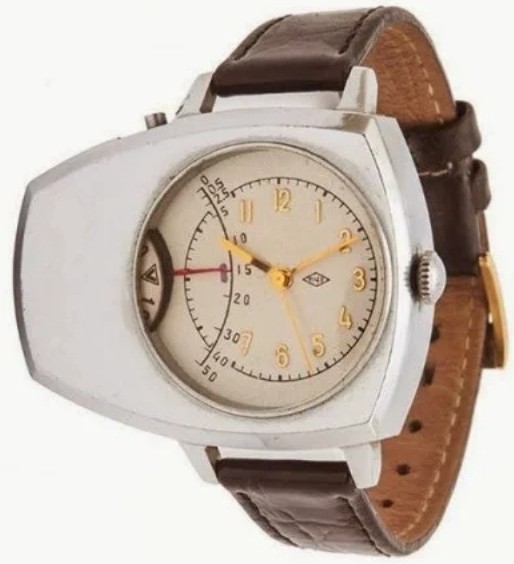
Due to the small circulation of issued watches, it is difficult to assess what is measured there and how (and whether it is measured at all). The only assumption is associated with additional contacts on the cover. Perhaps an external battery is connected to them, from which this built-in dosimeter is powered.
Note from Nick_Shl : «This is not a Geiger counter and dosimeter electrostatic. And the contacts will reset him. ” So, see below the spoiler about ID-1, the principle is the same :)

And I almost forgot, the most “pleasant” thing is that now the cost of such watches is about about a million Russian rubles :)
In general, almost 50 years have passed, and when a student made a weekly pilgrimage to the Minsk radio market, I once saw in a nearby flea market (dear darling darling “Field of Miracles” with brass discs, old harnesses and control sources stolen somewhere) an unusual thing. An elongated watch, in which, according to the seller, a working dosimeter with separate power supply was once built-in. According to him - because only the case from this watch got to the flea market. Having twisted the case in my hands, the only useful thing I managed to extract from it was the inscription “Polimaster”. Well, then, having walked around the experts, the exact name of this miracle was found - 1204 (in the photo - an approximate condition, my version was much more battered by life and “connoisseurs of electronic rarities”).
The “miraculous” PM1204s were produced from 1994 to 1997, and about 1,000 of them were produced in total. This device was a joint project of the still young Polimaster (the concept of the device, Geiger-Muller counter ( SBM-21 ) with strapping, assembly, debugging and calibration) and two well-known Minsk watch plants - Integral (ultra-large integrated circuit, more 10 thousand elements in the crystal, aka VLSI - a display controller, once Integral was famous for them all over the USSR) and Luch (a quartz dial mechanism, a case that resembles Casio Databank + watch case layout even the straps went from the Electronics- 53).
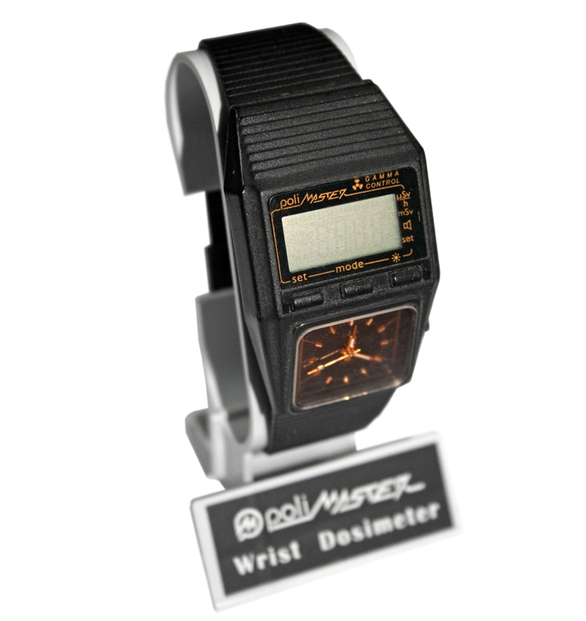
In fact, this is the first serial watch with a dosimeter in the world (unlike the mechanical “Rocket”). What Belarus should rightfully be proud of . After the PM1204 project, the company developed its line of watches with a dosimeter (12xx). After PM1204 were ennobled PM1205 . One would like to say “in the best traditions of the Electronics factory:
They were followed by PM1206 , which preserved, in addition to electronic content, the gilding of the case:
Then there were the PM1207 very similar to them, in which, apparently, only the front-end LCD screen covering was changed:
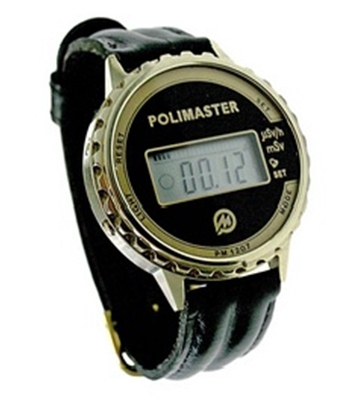
Next came the latest hourly trends (= “looking at Casio”) SIG-PM1208

It is impossible not to mention his "commander" option for aesthetes - SIG-PM1208M :

And finally, the last in the watch line, became a simple and trouble-free model PM1603 like a hammer:
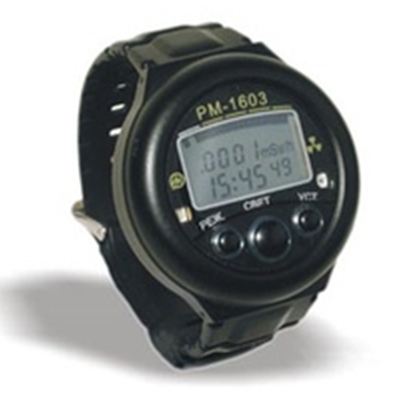
Which in the form of its modifications PM1603A and PM1603B (we will talk about them separately) is still alive.
In principle, any polymaster watch is unique. Especially in this field was noted the “option number 1208”. And not only because they used a Swiss watch movement Ronda 763 (assembled at the Chinese factory Ronda - approx mine ) and had a degree of protection IP68. The greatest interest in this watch was manifested when a MadMax user in the “dosimetric” forum thread caves.ru came up with a proposal to replace the Geiger-Muller counter (LND-714) integrated in the SIG-PM1208 with a 5 * 5 * 20 mm scintillator manually cut from a CsI crystal and glued onto an epoxy compound to a solid-state PMT. After such refinement, the watch received more than x100 sensitivity.
The matter is quite old, MadMax is already called KbRadar and it produces and successfully sells its own Atom Fast product line :) And in his spare time, he even manages to write excellent articles on Habr. Most recently, I even had a reason in one of the discussions to raise this question about the “scintillator + 1208” again:
I note that today it is no longer worth running immediately to avito.ru in search of PM1208. Firstly, because despite the exclusive characteristics of the modified watches, the alteration is fraught with several subtle moments that are not available to the vast majority of ordinary people:
Well, and secondly, modifications for the same x2 cost can easily be made to order in the workshops of the company. But finding SIG-PM1208 in an acceptable state is becoming more difficult every day, and the PM1603B available in our area is practically not prone to upgrade to CsI, because it is difficult to place a scintillator in a monolithic IP67 housing, and picking a device sealed with a silicone compound is not a pleasant experience.
Update as of September 29 , 19 : in honor of the release of the article, KbRadar is holding an action:
In addition to the legendary line of watches, the company Polimaster produces a huge list of radiometric iron. It would even be more correct to say that basically the company produces iron for the B2B segment (" business for business "), declaring itself 20 years ago with the help of the mentioned PDM-2 and watches for the B2C segment (aka " business for consumer "). Well, I, as well as an ordinary reader of a hubr, are of little interest in all kinds of portal monitors and kilogram radiometers for customs. We would have something personal, but with the functions of adult appliances. And here I had to collect information on crumbs. The reason is that the most interesting fixtures, as a rule, do not go beyond the scope of prototypes or ultra-small series. Therefore, I sincerely hope that the company will have enough time and energy to open at least a small museum of its "technical creativity" open to outside visitors and put as a caretaker one of the old seasoned developers who could answer the most tricky technical question. Because over the 20 years of Polimaster’s existence, many of these “prototypes and small series” have accumulated a lot that can please the eye of every radio amateur and RAD-DIY-era :)
For example, a miniature Geiger counter in the form of a usb keychain. It would be possible to reduce the price of a Geiger-Muller counter and a device in every house ... And so, everything settled on a prototype (by the way, despite the abundance of home-made dosimeters, I don’t remember something in the flash drive’s case,boil a pot! " Habrakommentator tell me! ")

Or a portable prefix to the “lead house” (I suspect that the Marinelli vessel should be in the kit somewhere nearby). The device, by the way, is designed specifically for the needs of the "Japanese peasants" in their fight against the "offensive" of Fukushima (which is confirmed by software only in Russian and Japanese).

And how do you like a telephone dosimeter (note that the phone is under the Mio brand)? I specifically searched for information on the phrase "telephone dosimeter" and did not find anything (except for mentioning the DO-RA project on Habré, but so far there is "everything is complicated" ...). The Polimaster prototype telephone radiometer had a scintillator on board as a detector. The device existed with scintillators of two sizes: small gamma / neutron (in the photo - it was he).
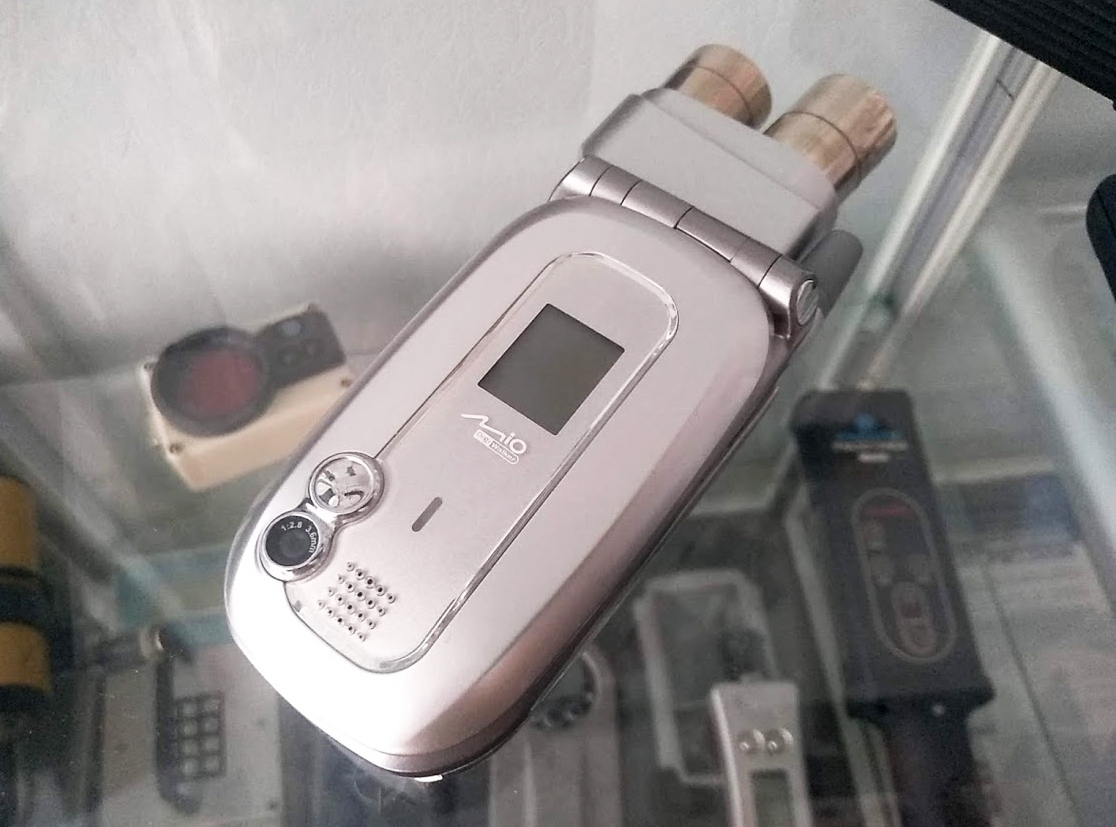
And with a large gamma detector (about 15 cm 3 ) - most likely the same as circled in the photo (brand of this "miracle phone", if someone suddenly needs it - PM1801):
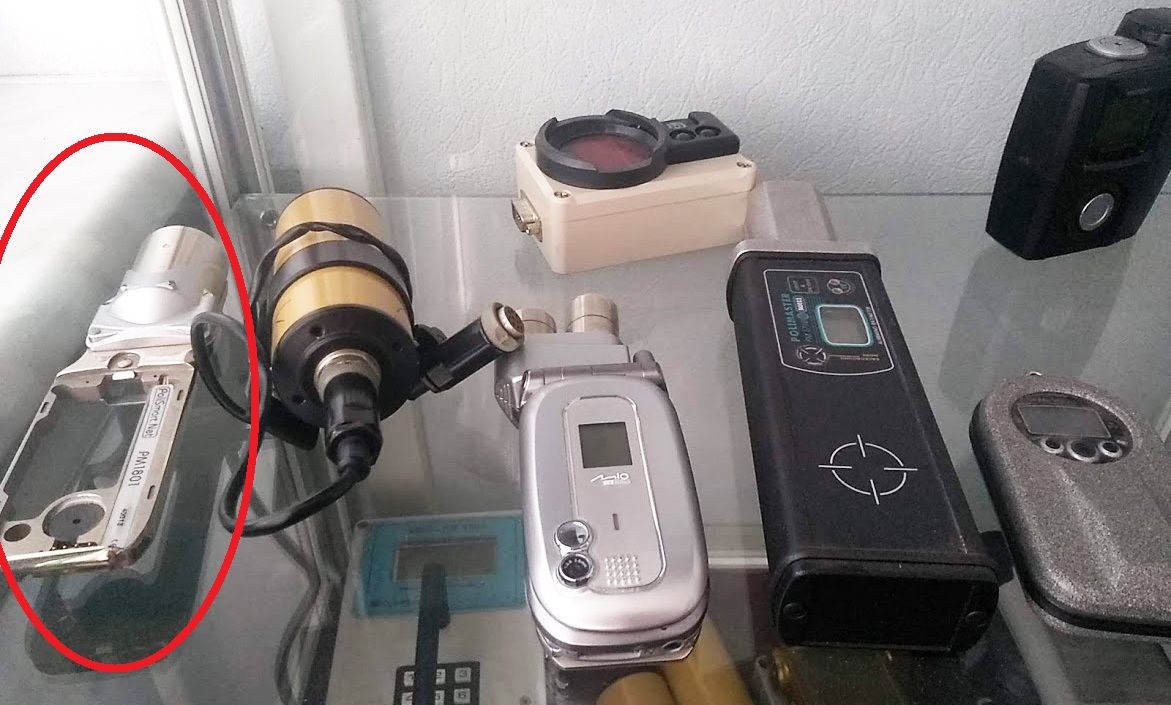
In fact, these devices are not a full-fledged radiometer, but rather a spectrometer-pager-identifier with a link to the web system, a prototype of the current SPRD (English Spectroscopic Personal Radiation Detector - a hi-end dosimeter spectrometer, i.e. a device with identification function nuclides) with the support of the interaction of personnel in the field and the command center (in the photo A. A. Antonovsky with his favorite, by the way, it was A. A. who invented and embodied many unusual devices in iron, which is probably why he tried to present his creations himself at numerous exhibition x).
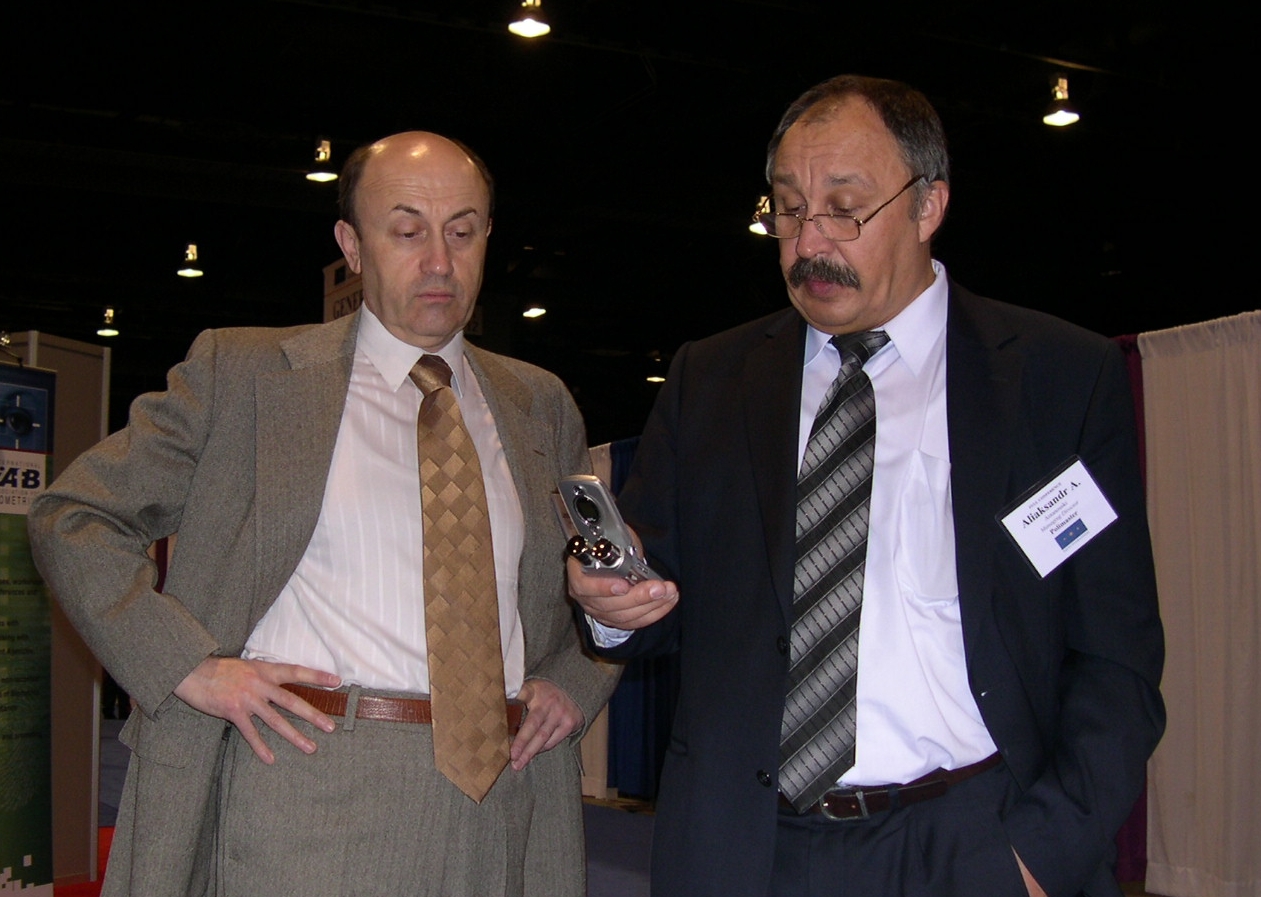
The phone allowed not only processing and visualizing detector data, but also supplementing them with video, audio, geolocation, giving the employee chains of instructions, templates for taking measurements, documenting incidents, etc.
Or do you like a traffic police stick with a built-in dosimeter on passive logic (= no microcontrollers, firmware, etc.):
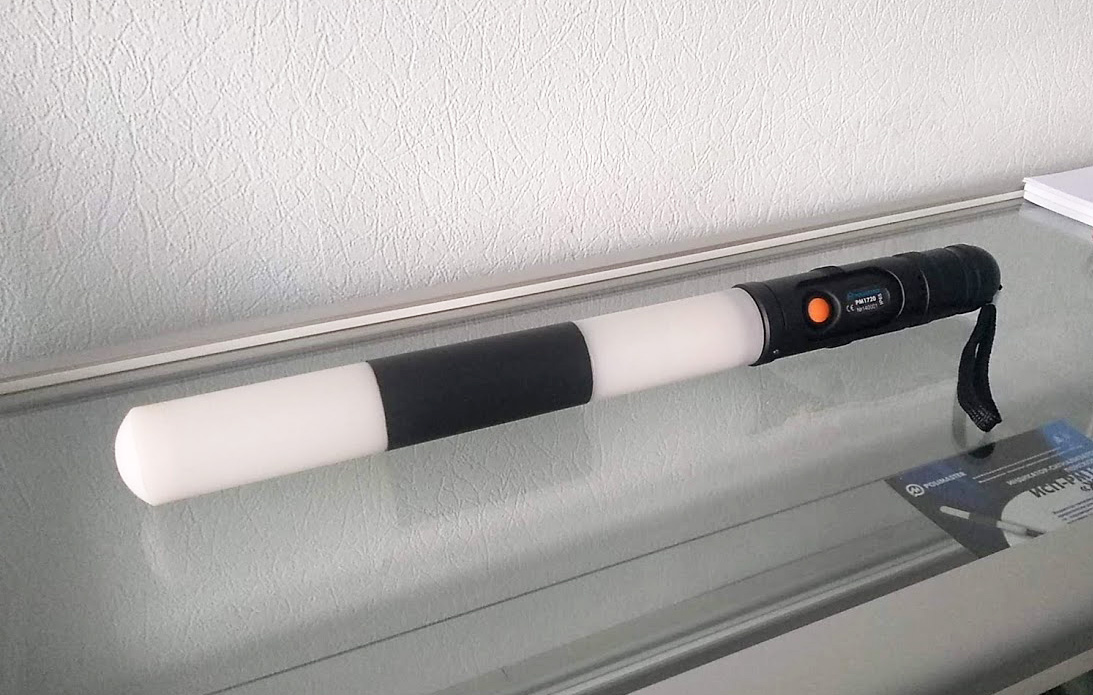
Enlarged markings so that the country knows its heroes.
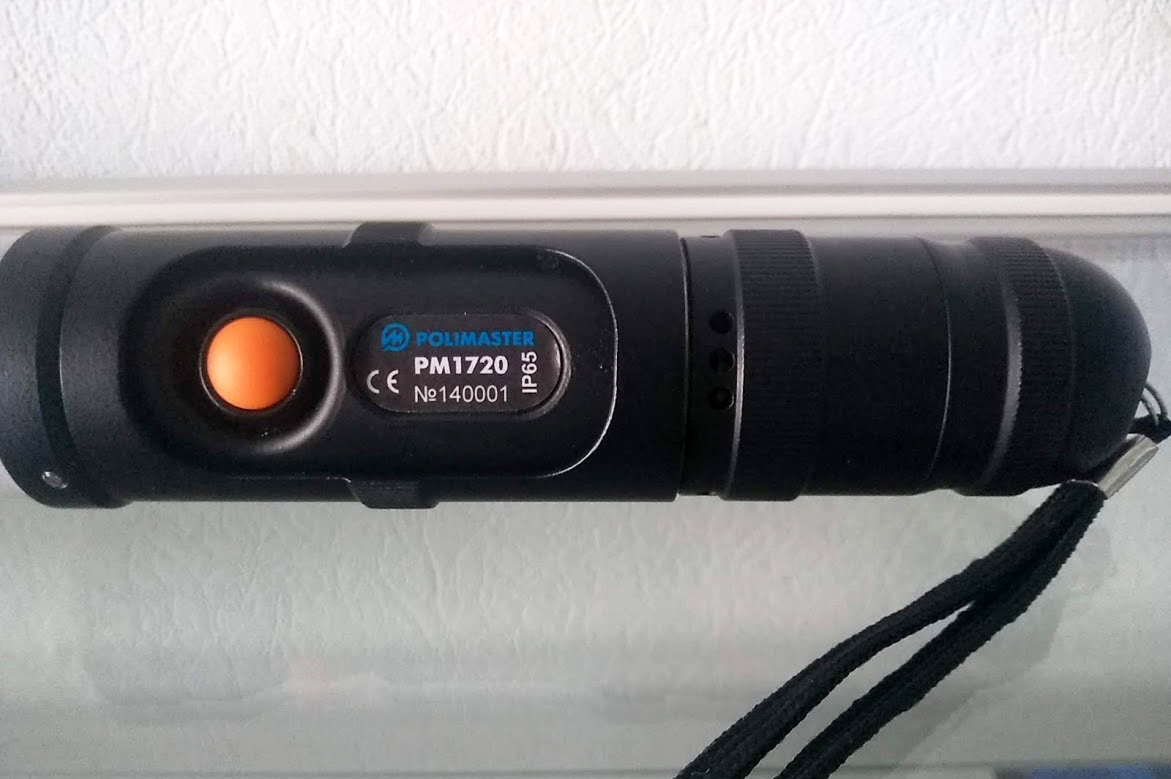
What is this thing? Dosimeter camera? Dosimeter-photo exposure meter?
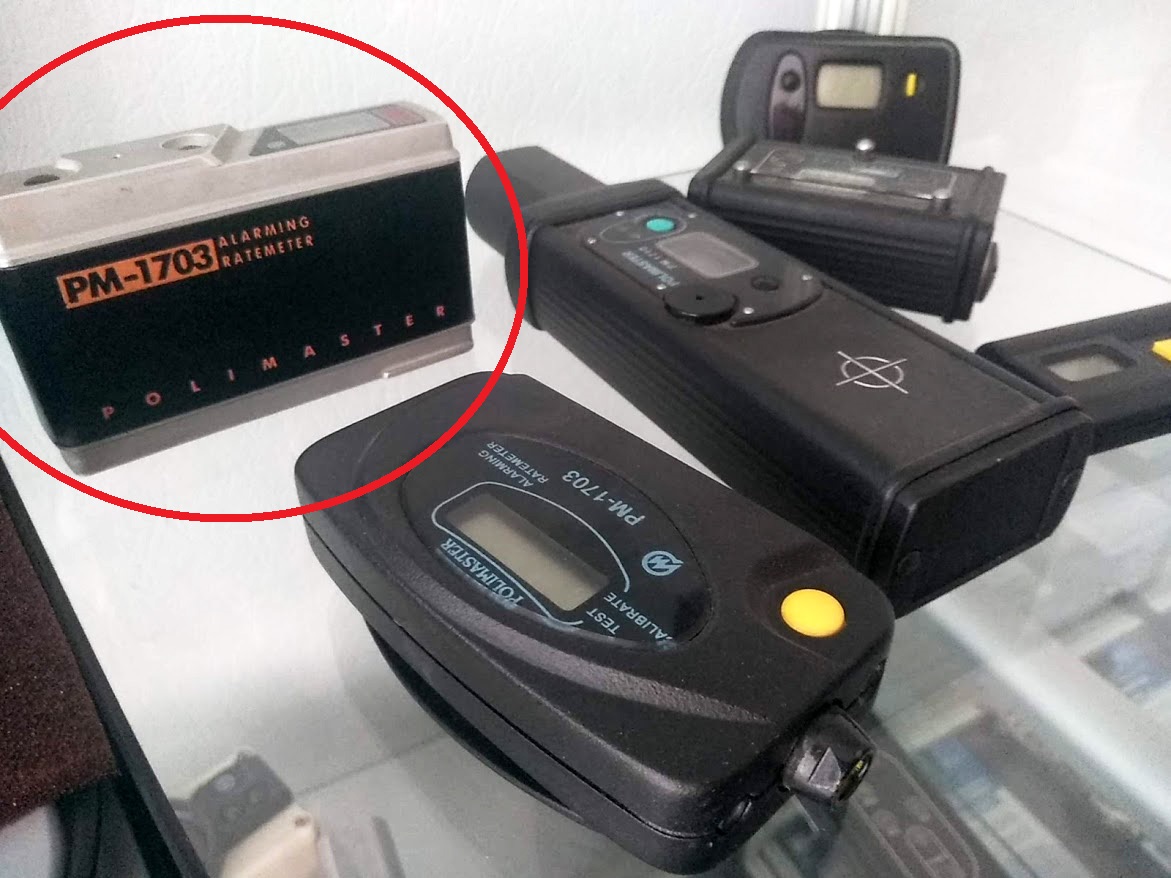
Honestly, if without looking to poke a finger at the scattering of devices, then even offhand it is difficult to say what additional functionality will be hidden in the Polymer prototypes :)
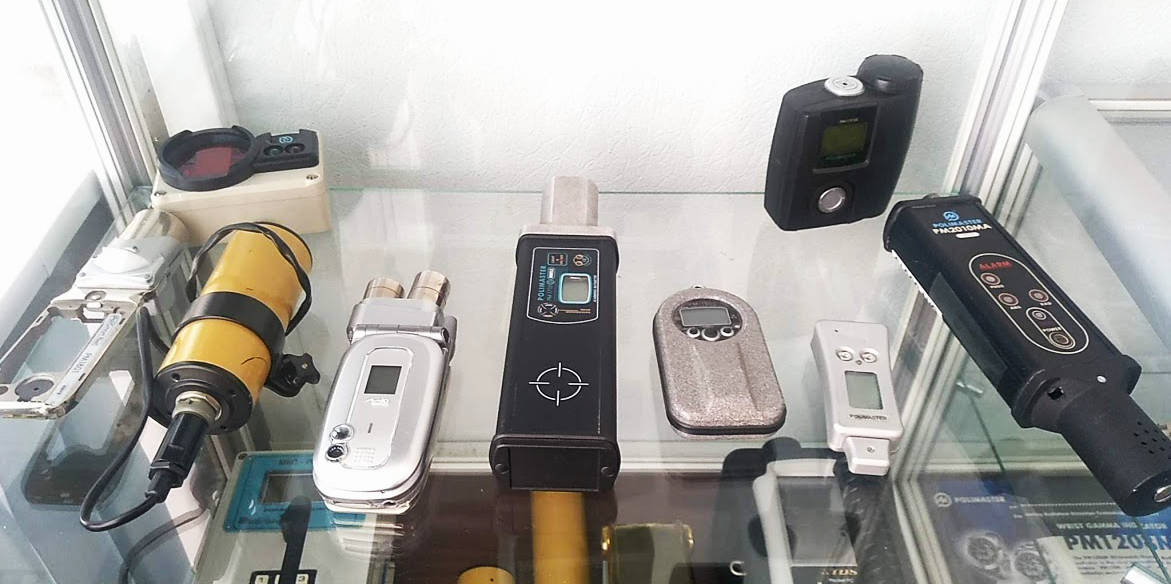
Even sweeter for the amateur eye is the unofficial developer museum. There are crafts and prototypes there, often much more interesting than those that went into the series and appeared in the form of releases on the offsite.
It is not surprising that looking at all this, I very clearly understand that in my native Belarus there are not many technology companies that a) have authentic traditions of electronic production and b) these traditions have been preserved and, most importantly, have increased. Repeatedly faced with the search for components, or even just a schematic diagram of some device produced on our supposedly legendary Integrals, Belvaras and Horizons, I received such a “vaccination against questions” that would last for the rest of my life. What is the answer “yes, once did. but it is not known who did this and by what documentation. nobody stores and remembers such things. ” It seems that people are sincerely proud that “out of sight - out of mind” the Soviet heritage and joyfully collect the designers from Chinese parts and stick a label with their name on them.
Well and smoothly from this it follows that most often the overpriced is charged with the shortcomings of Polimaster dosimeters. But we pay, among other things, for preserved traditions. True and iron (as well as sensitivity, appearance and blah blah blah) with other local players is difficult to compare. Take the Belarusian ATOMTECH, who is sitting tightly at the state order, so in my opinion there’s nothing to see there. Thirty years have passed, and the dosimeters are as angular as if from under an ax(where Casio straps are) . Industrial design? No, they didn’t hear ... I won’t be surprised if the devices are still with SBM-20 on board ... And you won’t take the state enterprise for testing :)
Well, what is $ 300 for a "dosimeter from Polimaster," when they offer me, from the Soviet preservation, another SI-8B for $ 270 to extend the functionality of my old RKSB dosimeter. What about Beta 1 for $ 150? With such prices for mica counters, it is not surprising that Aizon disappeared :)
In the case of "polymers" we pay for manual assembly, manual verification, manual verification / calibration. The guys slowly and with pleasure collect the best dosimeters in the world :)
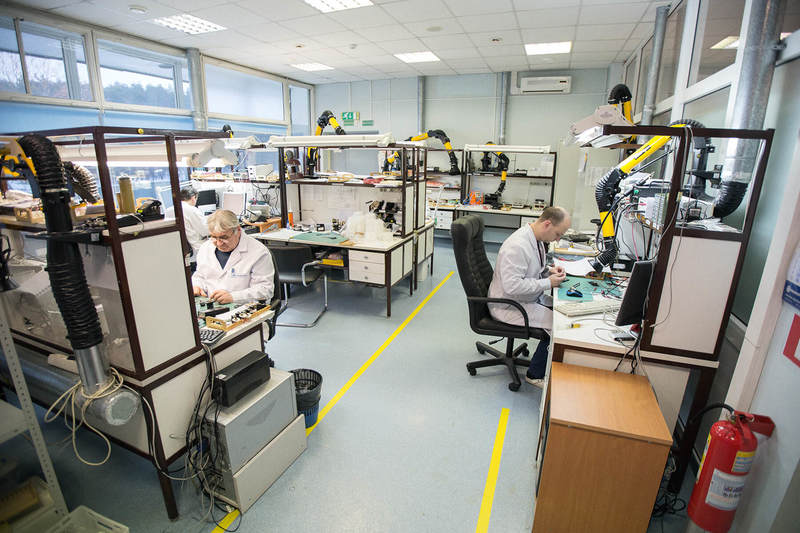
True, a handicap also leads to a more critical drawback for the potential user. Manual assembly - implies small series of products. Those. it is useless to break off the phones of the company; these unusual dosimeters cannot be obtained at retail. Only avito or a few dealers in Russia (and even in Japan). Surprisingly, it will be cheaper to order a Belarusian dosimeter from a Japanese auction than to find it in Belarus. The main reason is the low retail demand , which does not cover the retail license.
By the way, since I’m talking about the assortment, I’ll allow myself a small FAQ (based on the questions that “dosimeter seekers for myself” periodically asked me).
Q : the most interesting IMHO device that I would buy if I had unlimited credit. and why exactly he
A : there is such a thing, a search meter-signaling device ISP-PM1703GNA-II MBT
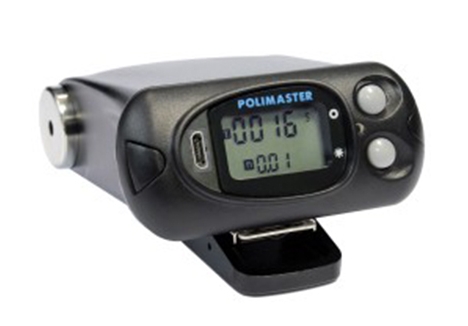
It is interesting in that it carries three types of detectors: a scintillator on CsI (Tl) - responsible for working with gamma radiation, a Geiger-Muller counter - for measuring DER and ED, and finally, a LiF / ZnS / LiI (Eu) detector for determination of neutrons. At the same time, it is a compact, direct indicating device, IP65 case, powered by AA. It is also interesting that in this class of devices, the function of isolating breaks into natural nuclides ( 40 K, 228 Th, etc.) is implemented, i.e. you can not only discover the source, but also give an initial conclusion about what kind of source it is. Although, it is believed that his ancestor, the search dosimeter DRS-PM1401, is much more sensitive (with the same scintillator size). Take note of all the "flea market seekers" of the Soviet SRP-68-01. PM1401 will be much more efficient (and easier), at the same or even lower cost in the secondary market.
Q : Is there anything that measures all types of ionizing radiation?
A : The most suitable option - PM1401K-3 - is equipped with built-in detectors of alpha, beta, gamma (CsI (Tl) and neutron (based on a 3 He counter) radiation (developer note - 1401K-3 is already equipped with a neutron detector LiF + ZnS ). There is a search mode, a mode for measuring the specific / volumetric activity of the 137 Cs radionuclide, as well as identification of the radionuclide composition of the substance. Nutrition - two AA elements. I could be wrong, but smaller in size than polymaster, there are no such devices in the world. The price, however, is SPACE. But the option "written off with custom "can save the father of Russian democracy ...
Q : A device for a city dweller?
A : this is probably an individual DKG-PM1904A dosimeter (reminds me of old BT-GPS like Nokia LD-3W ). Measures DER / ED by gamma, transfers everything via BT to a smartphone. It can identify the excess level and signal about it (a kind of "blind dosimeter"). Powered by a built-in battery. Compatible with iPhone / Android.

Q : What do company employees advise?
A : Employees are of the opinion that for an advanced layman it is better not to directly show the DKG-PM1300 dosimeter.
Energy compensated pin diode , one AAA battery, visual / sound / vibration indication when thresholds are exceeded. Measurement ranges: ED - 1 μSv-20Sv, DER - 1 μSv-10 Sv. Internal non-volatile memory for 50,000 events, RF + USB data transfer channels, connection via a sealed contact group (IP68 after all, the approach, by the way, is similar to that used in my favorite Magellan Triton 2000 tour navigator ).

Well, finally, I came to the answer to the “main question of life, the universe and all that” :) :) As I promised, I will tell you in detail about the version of the dosimeter that is with me everywhere. Having earned the first penny on assembling computers to order, I clearly realized for myself that there is no thankless job than giving advice on choosing a computer configuration to a person who had never had a computer before. In any case, then it turns out that you picked up a bad configuration. The situation is similar with dosimeters. Keep this in mind,% USERNAME%, and do not judge strictly.
For me, as a practicing sports tourist, new technologies are in most cases total miniaturization, energy saving and indestructibility (read outdoor-ness). It concerns practically all field equipment, without exception, for a dosimeter. And the latter entered the list of equipment, because the Chernobyl accident abundantly enriched our blue-eyed with many "hot" spots in the forests / swamps. As already mentioned above, as a result of deep introspection, I came to the only correct answer - the dosimeter should be in hours and must be able to count the accumulated dose. The carpal dosimeter from Polimaster PM1603 B ( B - because “up to 10 Sv” ~ 1000 R, and “the supply of the uncle is not good” - says a traditional Belarusian proverb) went well with this brand .
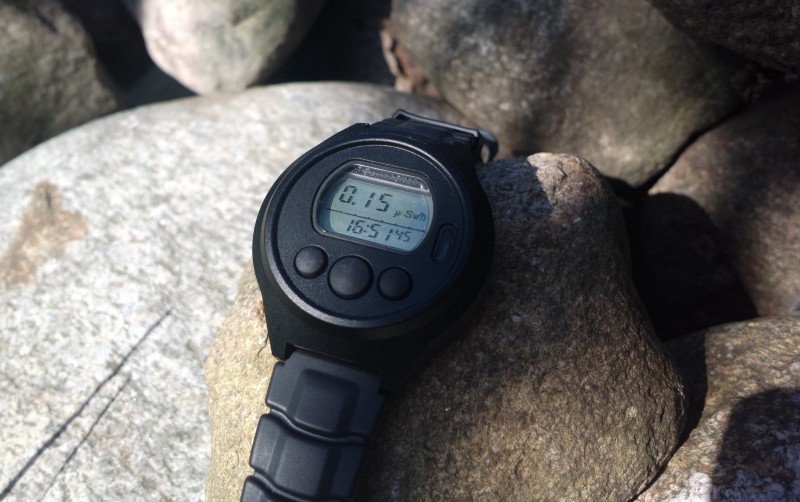
The manufacturer itself positions the DKG-PM1603 as:
The undeniable IMHO advantages of the device include the following:
And now, the noticed shortcomings , where without them:
In addition to the disadvantages mentioned above, the main complaint among fans of watches is the dimensions of the dosimeter. Especially when you have to compare with PM1208. “The puck” is clearly wider and thicker (“well, so it has a measuring range not of 1 X-ray, as in PM1208, but a whole 1000”):

Well, the thickness, so as not to be unfounded:

Honestly, I, as a tourist, have long liked the Casio ProTrek format, and therefore the PM1603B, which is not much behind them in terms of size, is quite suitable. In addition to the clock form factor, there is also a complete analogue, in the form of a dosimeter on a clip - model PM1604.
But 100% - in a week you get used to any size of watch :) On a woman’s hand or a child’s hand, most likely, the watch will look heavy. But the children are unlikely to be actively working near the reactor core (namely, employees of such a plan are the main focus group for PM1603B). But somehow the watch looks “on the road” on the skinny hand of a Belarusian navigator.
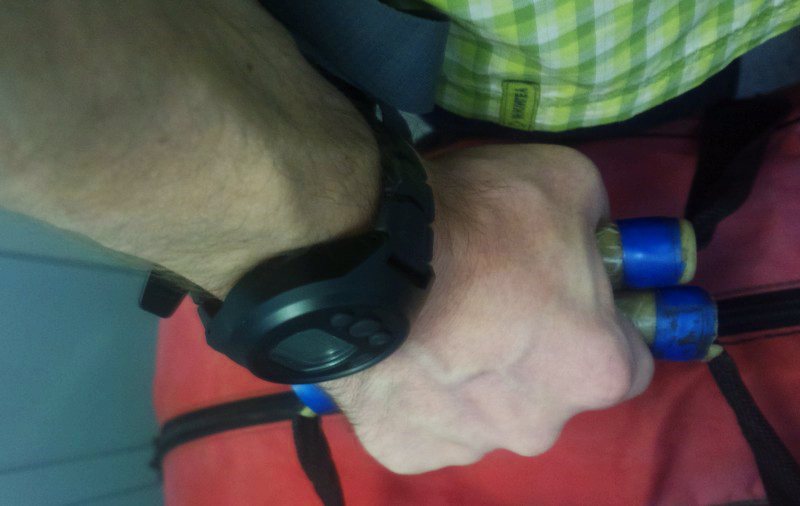
It is worth recognizing that the “firstborn in the ProTrek format”, the PM1603 was smaller than the subsequent PM1603A and PM1603B and more rounded or something + a duralumin cap (it was later replaced by stainless steel). The resolution of readings is 0.1 μSv / h, one threshold, the upper limit of the registered DER is 5 Sv / h (i.e., about 500 R / h) of the additional options - an alarm clock. What else touched in the remake is the Japanese strap. It's nice that Casio traditions are sacredly honored:
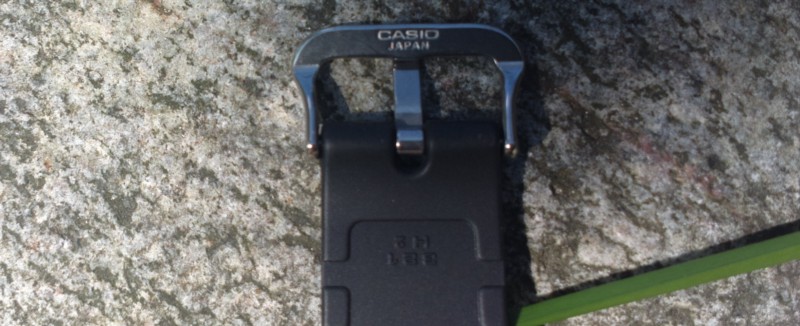
And always a harsh reminder on the back cover. So that the owner rarely makes a reservation and does not call the dosimeter for hours how much in vain. Not enough engraving :)
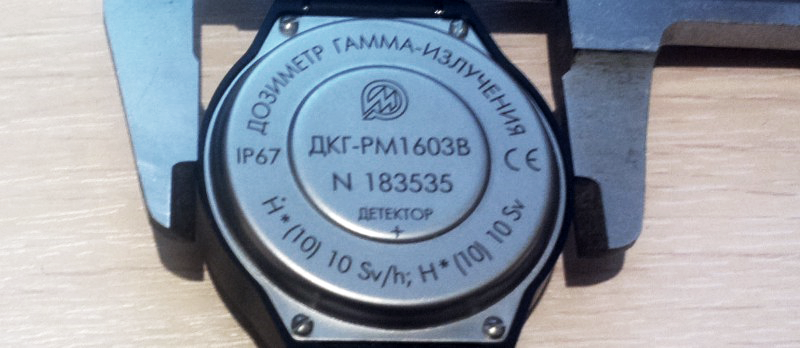
Now, regarding the comparison of SIG-PM1208 and PM1603V . PM1208 - thinner, but noticeably heavier. As I said, there is a function of voice acting for each pulse from the counter with a beep signal. It is strange why it was not possible to make this function in 1603 (at least disconnected). Probably, this is the case as it is, also because many regulatory documents PM1208 and PM1603 refer to different classes of equipment. The first is for indicator indicators (and the upper limit of indication is 0.01 Sv / h ~ 1 R / h), and the second is for dosimeters (up to 10 Sv / h). The difference is that indicator indicators measure the equivalent dose rate (sometimes they can measure the accumulated dose) and are not included in the State Register. And dosimeters measure the dose rate, the accumulated dose and are included in the State Register. But with all this, even the “gift” PM1208 (and PM1208M) are full-fledged measuring instruments, and not fashionable disposable toys. The claims of the people are mainly to the speed of response to the gamma background and the upper limit of the DER.
Well, at the end of the comparison, the photo from @komrad_Tsankov is all from the same topic on the RKhBZ forum
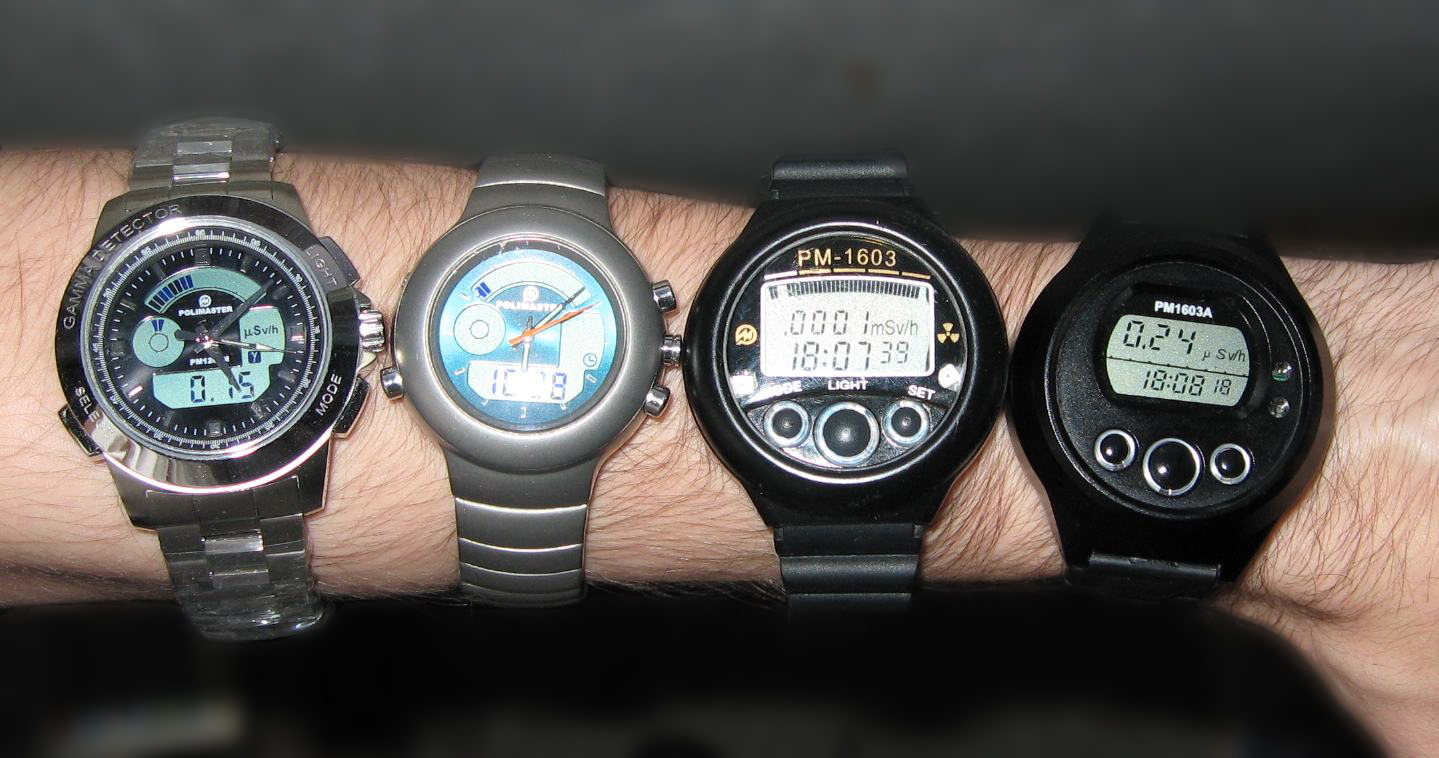
This watch is really useful only for a person who works with something ionizing or is periodically located in an infected area (in conditions of increased gamma background), for self-monitoring of the dose received. For measuring potatoes / mushrooms (the most common philistine scenario for using radiometric devices), this product is redundant in terms of functionality / price, and simply does not fit (how can they be measured in everyday life, dear ones, in the next sections). So, definitely, the thing is working, but for “an ordinary person” (that is, “once a year a citizen with radiophobia with physical inactivity” :)) is not very useful. On a superficial examination of the amateur in the metrology of ionizing radiation, it generally seems that the PM1603 is a replacement for thermoluminescent indicators and an ID-1 dosimeter, but at a cost of $ 500.
BUT ! But in our realities, this is the most affordable and reliable carpal dosimeter (I saw a video recently, when journalists visited the Chernobyl nuclear power station, peered, peered, but didn’t notice the dose accumulators, and such a product placement would be available for PM1603B, uhh). Prices in the secondary market are quite low (no one is looking for PM1603,because “MadMax will not insert a scintillator in them” , everyone is chasing PM1208) and you can find the device in excellent condition. For those who have radiation and radiation safety as a hobby rather than a job, spending a few thousand dollars is an inadmissible luxury. Therefore, you have to get by with the Soviet legacy, and with polymers from a flea market, on occasion. Although, every amateur wants to know where to get the scintillator cheaper, but better for nothing ( I will accept as a gift the addresses of such grandfathers with their attics / garages ).
But in general, such an encyclopedia of Polimaster (I’ve got hours ) turned out like this. I tried to answer the wrong questions that I had (the unknown sage was truly right, saying, “I'm tired of the fact that there is nothing to read - start writing yourself”). Returning to the brainchild of A.A. Antonovsky, I hope that I have not too abstrusely and ornately justified my popular thesis “the best dosimeters are from Polimaster”. Yes, they can’t boast junk penny prices on their products. Yes, their dosimeters are hard to find. But guys, believe me, they are 100% worth the time and effort spent on their “production”. Look at avito.ru, baraholka.onliner.by or even at Japanese auctions ... Polymaster, polymaster keeps its tough brand. For some reason, I liked the Dmitry_T quote from the caves.ru Radiation Monitoring Equipment section:
Anticipating accusations of radiophobia and "panic about radiation" in advance, I will say the following. In everyday life, some things are necessary, but some are not. Everyone decides for himself, there are people who, out of principle, do not use the washing machine (“spoils things”), and at the same time there are those who consider the coffee machine the most important object in the apartment. So in relation to radiation hazard - everyone decides for himself. But between any home appliances and a dosimeter there is a fundamental difference - safety. With proper use, the dosimeter will be able to provide it, but household appliances, even with all the desire, will not. The simplest alarm device, assembled from five parts, can help to avoid fatal situations. For example, here is this case of radioactive contamination in Kramatorsk. People would have had the simplest squeaker and many would have survived and not become disabled.
Of course, this is a rare and egregious case. But in the modern world it is quite possible to encounter something like this when buying building materials or choosing an apartment on the secondary market (or even in general, like that ). The rescue of drowning people is the work of the drowning people themselves, it seems to be a one-time “fuss”, but the effect of it is the years of your healthy life. It’s one thing to give $ 300-500 for a set of comic books “for the soul” or “Turkey-all-inclusive for a week”, and it’s another thing to spend them on a device on which health and life can depend, not only yours, but also your loved ones. And for the residents of Belarus, the speedy launch of BelAES should not be discounted;)
That's it for now. Traditionally, "subscribe and stay tuned." In the next part - in more detail about the "household dosimetric heritage of the USSR." By the way, something may appear earlier in my Medium than on the Habré, because the editor is more convenient there :)
PS I recently read an article about the anniversary of the nuclear test at the Totsk test site (65 years ago, the USSR conducted nuclear tests with the participation of people), became interested in such an organization as the "committee of veterans of Russian special risk units." He, if that, unites all people who are:
And in the photo of the first chairman of the committee, Vladimir Y. Benecianov, he noted the SIG-PM1208 mentioned in the article. By the way, if someone else somewhere noticed in the media something of the polymaster or described in the article - write in the comments, collect in a collection, well, and supplement the article.
PPS The article can be said anniversary, exactly a year ago, on this day I registered on Habré :)
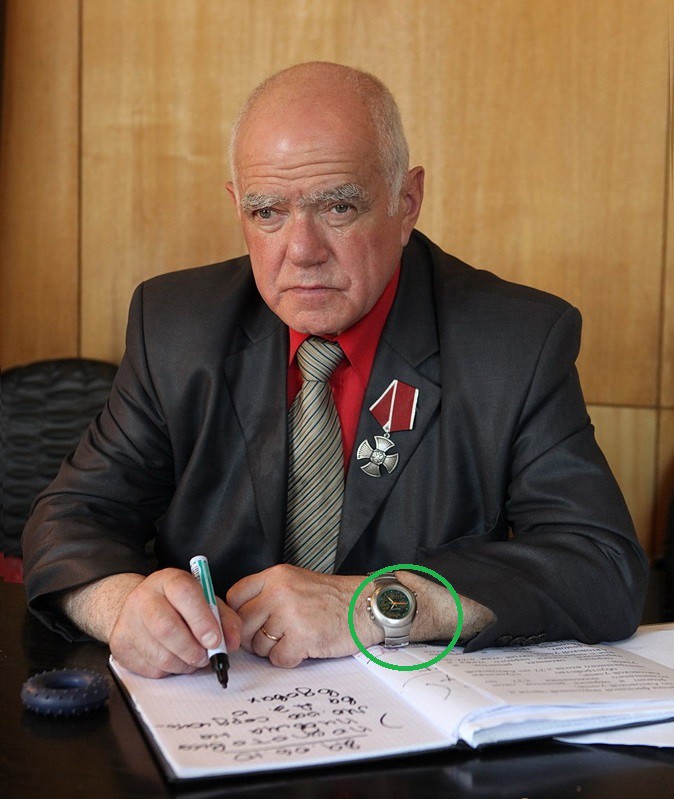
Acknowledgments: the author thanks Lyudmila Aleksandrovna Antonovskaya for the provided photos from the personal archive and for allowing me to go to the workshops :), Julia for an open and interesting dialogue, Ruslan and Alexander for excellent technical comments. And the Polimaster company - at least for the fact that modern Belarus has it.
As once told me, the habrachitatel in the commentary to my first article - "write when the soul requires." The soul demanded. Today, under the cut, not only my story about his everyday portable dosimeter, but also the story of a person’s life, thanks to which this dosimeter was born. About what will happen if tourists start collecting appliances ... Attention ! long read :)

The story of a happy man who loved his job. In memory of the Master ...
I am convinced that the only thing that helped me to continue my work was that I loved my job. You need to find what you love. And this is just as true for work as it is for relationships. Your work will fill most of your life, and the only way to fully enjoy life is to do what you think is a great thing. And the only way to do great things is to love what you do. If you have not found your business, look. Do not stop.
Steve Jobs
As a student, I often discussed various engineering / dosimetry issues with the old employees of my “home” department of high-energy chemistry (which later became just the department of radiation chemistry). And often men criticized Soviet dosimeters, the ubiquitous Geiger counters (“STS-5 can be gathered up in a landfill ...”), praised DP-5 (“only in case of a nuclear strike and overdoses”) or the rare “Pripyat” dosimeter (" ... the upper limit of 20 micro-roentgen is small, and so an excellent device, "etc. etc. ad infinitum). Naturally, questions were raised and various interesting homemade products. And one day, one of the “radio companions” inadvertently cast a phrase about “a group of initiative comrades from the instrument-making industry,” creating just some incredible ultra-miniature and ultra-sensitive devices for radiometry. Further questions led to disputes over whether these guys left for America or they haven’t yet given any objective information, but this is the first time I heard about the “main inventor from the Moscow Institute of Scientific and Technical Information”, the legendary Alexander Alekseevich Antonovsky.

It makes no sense to invent something if others can invent the same thing.
A.A. Antonovsky
It is known that where art and science combine, a miracle is born there. If we talk about miracles applicable to dosimeters, then all roads will lead to Polimaster . This Belarusian company abroad is known much more widely than in its native Belarus. And in principle, we can safely say that among people associated with ionizing radiation there is no one indifferent to its products (they traditionally admire quality and hate prices :)). Here I am, having heard stories, having read forums and user reviews, I became a fan of this company long before I learned about the fact of its production in Minsk. After all, even now I periodically hear different semi-mythical stories about “devices from Polimaster”. With a high degree of probability, if someone talks about some kind of unusual dosimeter (unusual form factor, unusual detector, unusual sensitivity, price, etc.) - in the end it turns out that there’s a stigma somewhere down there on the tidy Polimaster An amazing example of a manufacturer whose products reminds me of flashlights from Zebralight :) ("a flashlight for $ 100 ?? what are you? !!"). But the one who at least once appreciates the iron of such "manufactures of like-minded people" - then he will never be able to switch to something lower than class.
Somehow in my school years I had the opportunity to read the remarkable book of V. Nemtsov “Invisible Ways. Notes of the radio designer . " It describes an inventor-radio designer who tried to place the radios wherever his arms could reach - from a matchbox to a ring. So the founder of Polimaster, A.A. Antonovsky - IMHO, he is the same
The path of the radio engineer
Alexander Alekseevich was born in Minsk in 1951, grew up without a father, whom he was replaced by his grandfather, a professional icon painter. In 1968, Alexander graduated from secondary school No. 20 in Minsk and began working as a technician at the Minsk Electromechanical Plant (the same “Agat”). Combining work with training, the future Master enters the evening department of the Faculty of Radio Engineering of the Minsk Radio Engineering Institute (now BSUiR). The second-year military registration and enlistment office found the successful AA by surprise, but nevertheless it did not hinder to fully repay the debt to the Motherland in the “stronghold of the Belarusian Republican Chemical Binch Plant” - in the training of the military unit in Pechi, near Borisov.
About Stoves
I specially hid it under the spoiler. In school years, we, potential conscripts were always scared of “here, we’ll write such a description that you’ll go straight to the Stoves”. It was believed (not unreasonably) that hell was there. If you passed the stoves (= "school of life") and remained human, then you already live in the world for good reason. In principle, the situation there does not change. The sensational "Korzhich case " (easily googled) is a confirmation of this.
In this, to put it mildly, unusual place, Alexander Alekseevich not only managed to acquire the cunning military specialty “Class 3 Chemical Degasser”, but was also awarded the medal “For Military Valor”. After the army, there was a reinstatement at the institute and the position of an employee of the department for the development of measuring equipment of the Minsk Scientific Research Instrument Engineering Institute (MNIPI), where yesterday’s "fighter of radiation, chemical and biological defense forces" was formed as an engineer-inventor and practicing researcher. Having proved himself to be excellent at the Moscow Institute of Information Technology, however, on his own initiative A.A. transferred to the post of head of the department of the Special Design Technical Bureau (hereinafter referred to as SKTB) of the Ministry of Trade of the BSSR (since November 1978), where he met Anatoly Afanasevich Gulidov (a nuclear physicist whose efforts made SKTB appear in the light of day), which had the “sick” Kirilian effect and infected by this young engineer.

It is in the person of this person that Alexander Alekseevich finds a like-minded person, colleague and teacher. In SKTB, the main focus of research was the development and implementation of ozone-ion technology for the needs of agriculture of the BSSR. Antonovsky was the chief designer of the project for the development of an ozone generator and its accompanying aero-ion spectrometer and an ozone meter for agricultural needs. True, after the sudden death of A.A. Gulidova, the psychological atmosphere in the design bureau has deteriorated significantly (not without the influence of “top-appointed managers” trying to establish their own rules) and after working there for only a year, in 1980 Alexander Alekseevich returned to his native MNIPI, where until 1990 he worked as head of the sector.
It was these 10 years that became significant for the development of Antonovsky the inventor, because it was then that dozens of inventions were patented, which led to the all-Union recognition of the author and the assignment of the title of “Inventor of the USSR” to him. In the late 80s and early 90s, it was already clear that the USSR did not exist long. For many high-tech enterprises, the inevitable decay process has begun. Anticipating the changes, in 1989 A.A. first headed the Creative Team "Master" , and then, in 1991, the Small Scientific and Production Enterprise "Intermaster" , where the production of "folk" dosimeters "Master-1" was started. As the winner of the Ministry of Industry Competition for an “Express Dosimeter”, this development with minor variations was subsequently carried out at five plants of the USSR (in Minsk - NPO Gorizont) and was released in more than a million pieces. With the departure of A.A. in free swimming, the "national dosimeter" became known as personal dose meter PDM-2

These compact, cheap and maintainable devices deserve special attention and in the next parts I will definitely dwell on them. Already for one "master-1", Alexander Alekseevich could put up a monument ...
DIY Tips and tricks ...
Craftsmen connected a SBT-10A type Geiger counter instead of their own SBM-20 to PDM-2 and were able to measure not only the level of gamma radiation (all that is needed is to divide the readings of the device by 5.3), but also the beta-particle flux density. The SI-3BG and SI-34G counters were also installed. In this case, the dosimeter lost the ability to measure low, near background DER values, but could measure much higher values. For example, when installing SI-34G, the upper limit of measurement was already 5.4 mSv / h (0.6 R / h), but the readings had to be multiplied by 540 ... And so on. etc, thousands of alterations.
Many people have a question about the origin of the company name. In fact, everything is quite simple here. The word "master", according to Antonovsky, was not directly related to mastery as such, but simply repeated the name of the beloved literary hero from Bulgakov's "Master and Margarita." Well, it sounds the same in different languages of the world. And “inter-” - the prefix popular at that time, meant the desire to enter the international level. Later, in 1992, the joint Belarusian-Polish enterprise Polimaster was created by eight instrument-builders, where the international gave way to multifacetedness (“poly-”). This year (and February 28th thereof) is officially considered the date of birth of the company. The first contribution to the charter capital of the young company was personal old Lada- "penny" (VAZ 2101) Alexander Alekseevich worth about $ 800. And a long journey began, with the search for components, a natural exchange of radio parts, self-delivery of dosimeters collected on the knee to the Hunter and Fisher stores, and many others, when often there was not enough money even for food and the situation was saved only by the old stew supplies reserved for tourist trips . As a result, the crucible of the 90s forged a world-class vigorous company from semi-handicraft production, writing about which, without any frivolities, is an honor for me.
The path of a sports tourist
It makes no sense to return from travel if you do not plan new routes
A.A. Antonovsky
Despite the fact that the theme of sports tourism does not fit the theme of Habr, I would like about the role of this phenomenon in the life of A.A. Antonovsky mention. Who will write about a tourist-vodnik better than a tourist-vodnik ...
I have repeatedly visited the idea while writing an article, but how would Alexander Alekseevich’s life develop if there weren’t sports tourism in his life. Would you have the strength to go through the service in the USSR-ovsky "Pecs"? To monotonously collect individually the first "masters" of "matches and acorns" in the conditions of the "dashing 90s"? A person far from sports tourism (sports (!), Where the main thing is overcoming obstacles) often thinks that a categorical trip is something like a trip to Egypt on all inclusive, only with a backpack and an ice ax. But I know for myself that having crossed the threshold of a high category, or hanging on the insurance over the abyss, then many unsolvable “city” problems and cases seem so miserable and inconsequential ... Sports tourism gives you an incomparable hardening and thirst for life. Repeatedly, returning from another campaign of my own spiritual intensity, I thought that if I were the director of a certain company, I would only recruit employees with ranks who were straightforward and firmly believing that only heaven was the only insurmountable obstacle for them.
looking ahead
By the way, in order to “check for lice” (note - my assumption) of employees, the June Polisaster corporate customs introduced the obligatory June tourlette, which has been carried out for nearly 30 years ...
I’ll add on my own that any real group in a sports campaign is a ready-made “ hacker / hustler / hipster ”, and it remains only to scale properly to solve a business problem.
In the life of A.A. tourism appeared (as probably with many students of the 80s) back in school, with the first trips under the auspices of the local tourist club. Moreover, the main focus was water tourism (a thing, admittedly, not as hyped as mountain tourism).

Therefore, it is not surprising that A.I. He continued to actively engage in his favorite hobby - alloys. Moreover, having the technological capabilities of the research institute, one could afford not only to repair the Taimen at the highest level, but also, I think, to tailor the catamaran to order (although Alexander Alekseevich did not trust anyone to assemble his equipment, he did everything himself, from finding the right one “ theses ”, before sewing hermetic bags).
How can one not recall the stories that are still circulating in narrow circles of Belarusian water companies - about “gift Taimen from titanium”, which were produced for especially dear guests at the experimental plant at the Research Institute of Heat and Mass Transfer (if anyone knows how it really was - tell me on the PM). I suppose that the situation in all engineering research institutes was the same (= we do the best equipment ourselves).
And the equipment would have to be of the highest quality, for A.A. in the choice of routes on trifles was not exchanged.

The track record includes the training rivers Kura, Kamchatka and Katun (a mixed mountain-trekking trip, the water part - on rafts PSN-10).
favorite fishing section on avito - life raft PSN-10 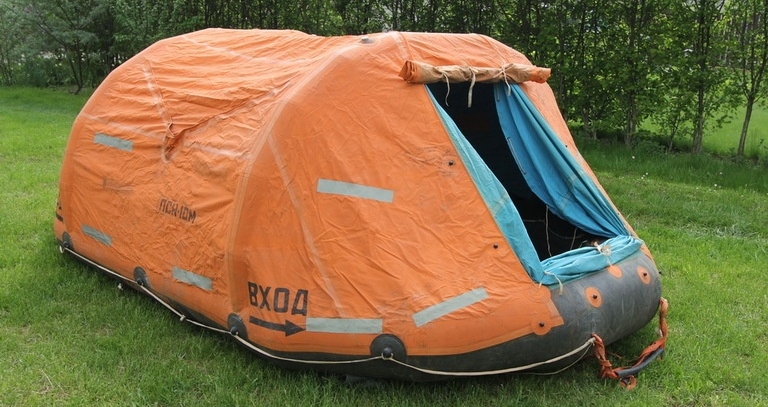

Of the serious hikes, one can mention the rafting on the Kitoy River (1982):

About Kitoy
The name of this river in Tofalar or Tunguska dialect is translated as “cleft palate”. It accurately describes the difficulties that may arise in someone who chooses a place of alloy whale. Some obstacles belong to the highest category of difficulty. The cascade of “Motkin’s cheeks” rapids became legendary for many water-sportsmen, the passage of which requires the highest level of paddle control, worked crews and, most importantly, reliable weather forecast, otherwise when you raise the water, many rapids become almost impassable, and paths of escort or exit from the route - unavailable.
There is also an alloy-first ascent of the Indigirka River, as a result of which A. Antonovsky fulfilled the standard for the title of Master of Sports in sports tourism. By the way, the most often “mentor” in Alexander Alekseevich’s water trips was the legendary Belarusian waterman - A. Bogdanovich, who is often described as “trained masters of sports more than anyone else in the BSSR”.
The most serious test for A.A. became the Altai river Bashkaus, which is one of the most difficult of the rivers traveled by tourists in Altai, and its main tributary, Chulyshman. The Bashkaus is complicated not only because of its extreme saturation with obstacles (their total number is 214 with the length of the rafting part 195 km), but also psychologically: the most serious and dangerous rapids are concentrated in 7 canyons and the impassable Lower Gorge.

A group of Belarusian tourists had to storm this Altai stronghold twice (unsuccessfully, in 1984 and successfully, in the fateful 1986). Interestingly, one of the attractions of this river is the so-called. “ Guest books of Bashkaus ”, a collective document consisting of records of tourist groups that walked along the Lower Gorge of the Bashkaus River in 1986–2004. Fiction is not for the faint of heart. I look through modern photographs of the Bashkaus rapids from tourist reports and, honestly, it gets colder in my chest when I imagine myself in a catamaran carriage. As seasoned watermen say, “Bashkaus - the level of champions of the USSR”. So, the most interesting thing is that in these chronicles there are marks of the Antonovsky group (!):
author spelling saved
And the record after passing successfully (= all are alive):
***************************************************** *****************
08/26/1986. G. Minsk.
Hand. Bogdanovich
Maslyukov
Yurkevich
Yakovlev
Gurkov
Gogal
Antonovsky
Shklyarevsky
Galkevich
French
The first stage of the "Key" surrounded.
***************************************************** *****************
And the record after passing successfully (= all are alive):
*********************************************.... *****************
26 - 08.27.1986. A group of Minsk residents, leader A. Bogdanovich. Second attempt to pass Bashkaus. The first is 84 years old. We got to Onysh, then went to Koo. Now they have surrounded the first step of Klyuchevoy, Trap, Meat Grinder, and Stone Island before the bath.
Had a good night.
After lunch we will go to Kamikaze. The water is medium. We will try to moor in front of the barrel.
10 - without women. Two catamarans.
- Bogdanovich A.
- Maslyukov V.
- Antonovsky A.
- Kurkov A.
- Gogol G.
- Galkevich A.
- Shklyarevsky G.
- Yurkevich A.
- French N.
- Yakovlev V. - "the fisherman"
We wish you all successful passage of the Lower Gorge and good weather.
Sincerely, the head (Bogdanovich).
26.27.08.86. Baptized the path of "Dear Life". From everyday routine: to drag a catamaran is seeds, in comparison with a raft. But if there is a bag of these seeds, well, its on ... You will be the first to get into the frame ... or on a dropper.
The first catamaran passed half of the Kamikaze threshold and moored off the left bank. After watching the second half, they told us that at the exit you can go in the center.
We go the whole threshold.
! ( — ) .
*******************************************************************
It is not surprising that with such experience behind him, from 1985 to 1987, Alexander Alekseevich was chairman of the Republican and Minsk regional IWC for water tourism. Now we, Belarusian tourists-water guides, are letting out in alloys those whom Antonovsky once let out.
The assault on Baskaus turned out to be the most serious test (possibly also because the campaign took place in July 1986 , and his wife and two young children remained at home). After this trip, the activity of A.A. in the field of water tourism, it began to decline, most of the efforts were taken over by "dosimetric concerns", and then concerns about the future of the company
Alexander Alekseevich organized his last serious sports campaign for his 50th birthday and celebrated his birthday in the Himalayas at an altitude of 5500 meters in the base camp of Everest, visiting Nepal with his daughter Lyudmila.
Unfortunately, in 2006 the life of A.A. broke off. But, the Himalayas did their job - lit a flame in the right heart. Now the head of the company is now Lyudmila Aleksandrovna, who not only took the lead, but also preserved her father's love for sports tourism, albeit in the mountainous form.
“I remember myself from the age of 4,” says Lyudmila Alexandrovna. - The first printed picture: I wake up in the morning, I have a birthday, and I don’t have parents - they went on a camping trip, and I'm sad. But they sent a huge chocolate from Tajikistan, and here I am still sleepy lying in bed and looking at her.

Unlike his father-waterman, Lyudmila is an experienced mountaineer with Fuji, Mont Blanc, Matterhorn, Cala Patar, Elbrus, Kilimanjaro, Aconcagua (personal record) on his personal track record. etc.This year, by the way, a group of “Belarusian hardware” with their “iron lady” noted in Kazbek. And ... for many years now, every climb of Lyudmila Alexandrovna to a symbolic peak - is dedicated to her father ...

As much as I would not like to write about the rapids, peaks and people "conquering themselves", the article is all about dosimeters, because it was they who became the work of their whole lives now Antonovsk them and thanks to them I learned about the existence of wonderful people.
About technical creativity
Well, if we have to live in a world of artificial radiation, then it is better to do this with open eyes. This does not interfere with public services doing their job. But without relying on them so recklessly and recklessly ...
Vinogradov Yu.A. Ionizing radiation: detection, control, protection
As correctly noted in the quote from the book of Yu.A. Vinogradov (by the way, it was he, in 1990 on the pages of the AiF, published the scheme of the simplest dosimeter for the whole USSR, having almost paid for it with his freedom) it is best to work with radiation “with open eyes”. The dosimeter traditionally acts as these very eyes. The market of dosimeters in the USSR is a rather narrow, and even generally forbidden (for some time) niche. And since most of these devices were built on the basis of a Geiger-Muller counter (which is "a hundred years old at lunch"), most often enough power elements (ala Krona) were required for power supply, and the circuitry of a typical dosimeter could fit only in a case of considerable dimensions. If you ask your friends and acquaintances the question “describe how do you imagine the dosimeter?”, The answer most often is “a box that hangs on its side and a long bar” (watched the HBO film “Chernobyl”

or the “red box on Krona” (who did not watch the film “Chernobyl” from HBO, but who lived in Belarus / Ukraine in the 80–90s).

More advanced can remember modern Terra, ISS, etc. etc., which seem to be smaller, but still require attention to themselves (and most importantly, every time you need to remember to take it with you ). For a long time I decided for myself that the most convenient form factor for an everyday dosimeter is a watch, which is always at hand.
It is worth recognizing that the Soviet engineers first thought about this as far back as 1954, when the Rocket Launched Petrodvorets Watch Factory tasked to combine a watch and a dosimeter in one watch case. Apparently, “from above” they decided how to encourage such conquerors of a peaceful atom, as from a mosaic on the wall of the Institute of Nuclear Research of the NAS of Ukraine:

Encourage, expected for the USSR, decided to watch. But not simple, but with a certain bonus (if one of the readers had access to this miracle, I will be glad to hear about the TTX of the built-in dosimeter in the comments). Apparently, something went wrong, because the circulation of these mechanical watches is minimal, as people who are knowledgeable at the given time write , only one watch instance is known.

Due to the small circulation of issued watches, it is difficult to assess what is measured there and how (and whether it is measured at all). The only assumption is associated with additional contacts on the cover. Perhaps an external battery is connected to them, from which this built-in dosimeter is powered.
Note from Nick_Shl : «This is not a Geiger counter and dosimeter electrostatic. And the contacts will reset him. ” So, see below the spoiler about ID-1, the principle is the same :)

And I almost forgot, the most “pleasant” thing is that now the cost of such watches is about about a million Russian rubles :)
In general, almost 50 years have passed, and when a student made a weekly pilgrimage to the Minsk radio market, I once saw in a nearby flea market (
what can be found at flea markets ... 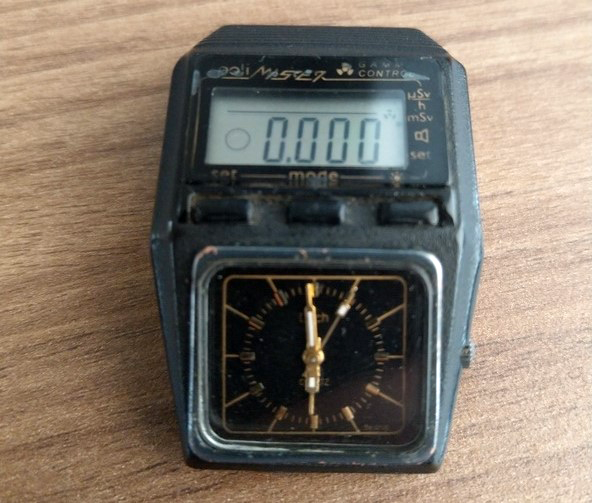

Property of the Republic
The “miraculous” PM1204s were produced from 1994 to 1997, and about 1,000 of them were produced in total. This device was a joint project of the still young Polimaster (the concept of the device, Geiger-Muller counter ( SBM-21 ) with strapping, assembly, debugging and calibration) and two well-known Minsk watch plants - Integral (ultra-large integrated circuit, more 10 thousand elements in the crystal, aka VLSI - a display controller, once Integral was famous for them all over the USSR) and Luch (a quartz dial mechanism, a case that resembles Casio Databank + watch case layout even the straps went from the Electronics- 53).

In fact, this is the first serial watch with a dosimeter in the world (unlike the mechanical “Rocket”). What Belarus should rightfully be proud of . After the PM1204 project, the company developed its line of watches with a dosimeter (12xx). After PM1204 were ennobled PM1205 . One would like to say “in the best traditions of the Electronics factory:
They were followed by PM1206 , which preserved, in addition to electronic content, the gilding of the case:
Then there were the PM1207 very similar to them, in which, apparently, only the front-end LCD screen covering was changed:

Next came the latest hourly trends (= “looking at Casio”) SIG-PM1208

and what is inside this wonderful box
It is impossible not to mention his "commander" option for aesthetes - SIG-PM1208M :

And finally, the last in the watch line, became a simple and trouble-free model PM1603 like a hammer:

Which in the form of its modifications PM1603A and PM1603B (we will talk about them separately) is still alive.
In principle, any polymaster watch is unique. Especially in this field was noted the “option number 1208”. And not only because they used a Swiss watch movement Ronda 763 (
Scintillators and modifications from rad Left-handed
Watch before modification, with native GM

a piece of raw CsI (Tl) ...
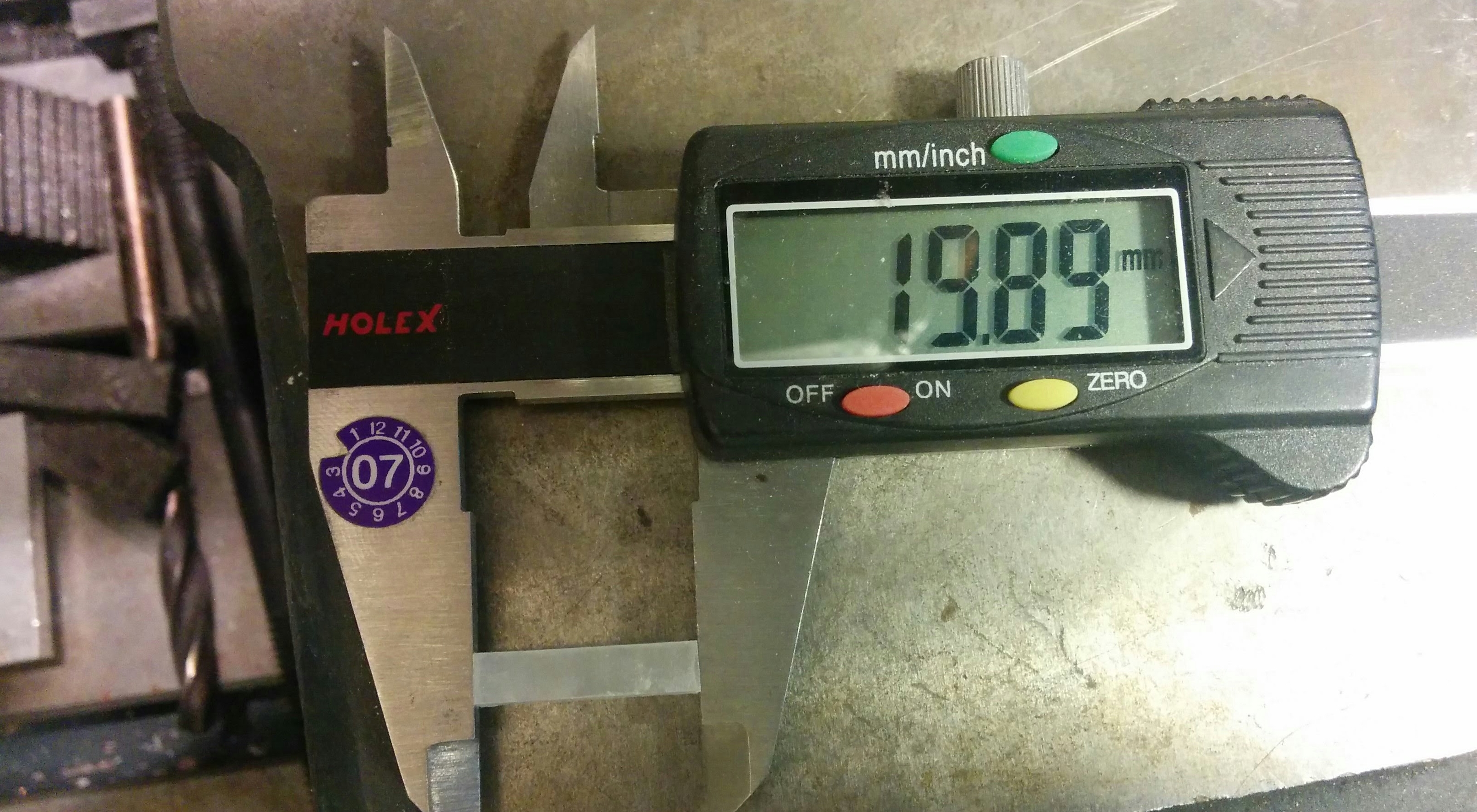
... ready to install
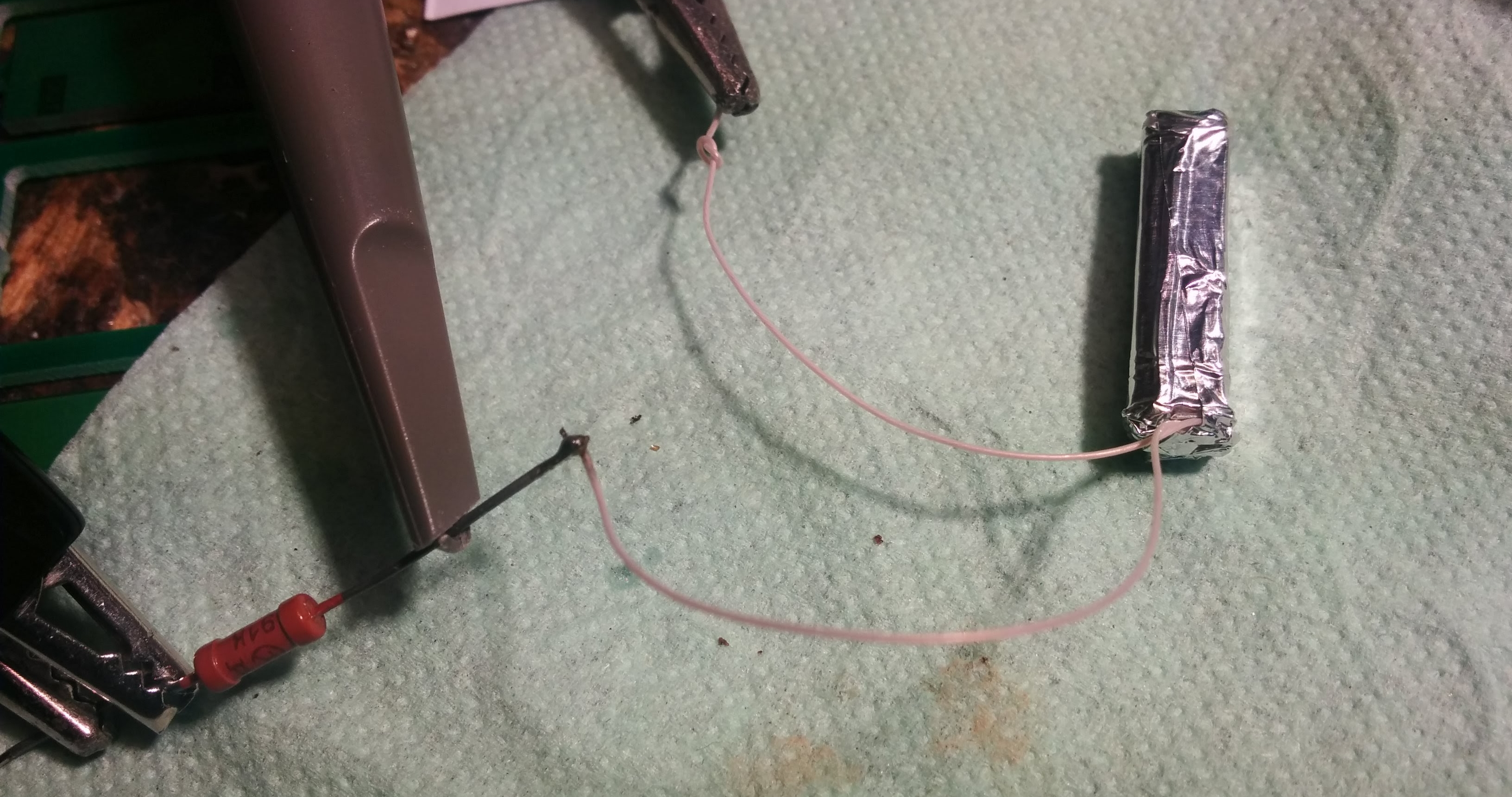
some magic ... and a scintillator on board


a piece of raw CsI (Tl) ...

... ready to install

some magic ... and a scintillator on board

The matter is quite old, MadMax is already called KbRadar and it produces and successfully sells its own Atom Fast product line :) And in his spare time, he even manages to write excellent articles on Habr. Most recently, I even had a reason in one of the discussions to raise this question about the “scintillator + 1208” again:
... it turned out fine, and more than 20 people around the world use such a watch as a rather sensitive indicator that gives odds to all devices on the Geiger counter. A sense of cesium there turns out to be about 600 imp / μR. For comparison: SBM21 - about 8, SBM20 - about 80, "beta-1" (MKS01, "radio scan") - about 120.
I note that today it is no longer worth running immediately to avito.ru in search of PM1208. Firstly, because despite the exclusive characteristics of the modified watches, the alteration is fraught with several subtle moments that are not available to the vast majority of ordinary people:
Give up hope, everyone coming in here ...
- Scintillator material, CsI single crystal - a very rare and expensive consumable (x2 cost of hours with work). In addition, cutting it is quite dangerous, since a) the dust contains poisonous thallium b) fumes cause severe corrosion of metal parts. Also, just the other day, he was discussing the issue of CsI plasticity with a friend ("they wanted to split, but he swam like cheese").
- During the alteration, the noise level increases significantly (the scintillator with respect to the Geiger-Muller counter is noisier) and, in addition, the gain of the solid-state PMT changes with temperature fluctuations.
- When remodeling, it is necessary to remove the factory voltage converter (the scintillator, unlike the Geiger-Muller does not require 500V, but is satisfied with 30) and modify the processor electronic circuit connected with it. Those. will have to install additional electronic components (in particular a comparator for PMTs) and put up with the increase in power consumption of the clock processor.
- It is unrealistic to calibrate a watch in artisanal conditions under a new sensor. You have to memorize and recalculate all the numbers in your mind (akin to translating bits into kilobytes). Mentioned in a conversation with KbRadar and about this:
- During the alteration, the noise level increases significantly (the scintillator with respect to the Geiger-Muller counter is noisier) and, in addition, the gain of the solid-state PMT changes with temperature fluctuations.
- When remodeling, it is necessary to remove the factory voltage converter (the scintillator, unlike the Geiger-Muller does not require 500V, but is satisfied with 30) and modify the processor electronic circuit connected with it. Those. will have to install additional electronic components (in particular a comparator for PMTs) and put up with the increase in power consumption of the clock processor.
- It is unrealistic to calibrate a watch in artisanal conditions under a new sensor. You have to memorize and recalculate all the numbers in your mind (akin to translating bits into kilobytes). Mentioned in a conversation with KbRadar and about this:
... the firmware could not be counted. Of course, modifying it a little would be much better. Another option: put the crystal a little smaller than the maximum possible in size and the conversion factor for the background spectrum will be 100.
Well, and secondly, modifications for the same x2 cost can easily be made to order in the workshops of the company. But finding SIG-PM1208 in an acceptable state is becoming more difficult every day, and the PM1603B available in our area is practically not prone to upgrade to CsI, because it is difficult to place a scintillator in a monolithic IP67 housing, and picking a device sealed with a silicone compound is not a pleasant experience.
Update as of September 29 , 19 : in honor of the release of the article, KbRadar is holding an action:
Promotion from the legendary MadMax
Write in a personal note, in honor of the publication of the article and on the occasion of the day of the atomic industry worker, a SIG-PM1208 watch with a scintillation detector replaced for 30 tr. yours. *
* The offer is valid for everyone with Habr and until I run out of hours.
Also
In fairness, it can be noted that today on the market there are several models of dosimeters in the form factor of watches. You can mention, for example, the company MIRION with their monstrous look watch MBD-2 .
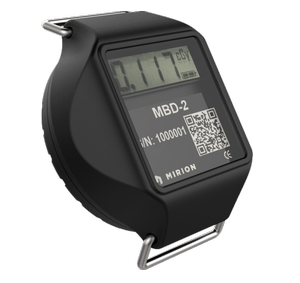
From the inside, MBD-2 suspiciously reminds me of the first PM1204 (mainly because of a bunch of different types of batteries)

To compare the inside of the PM1204 with greetings from the 90s:

And so MBD-2 harmoniously looks on a hand:
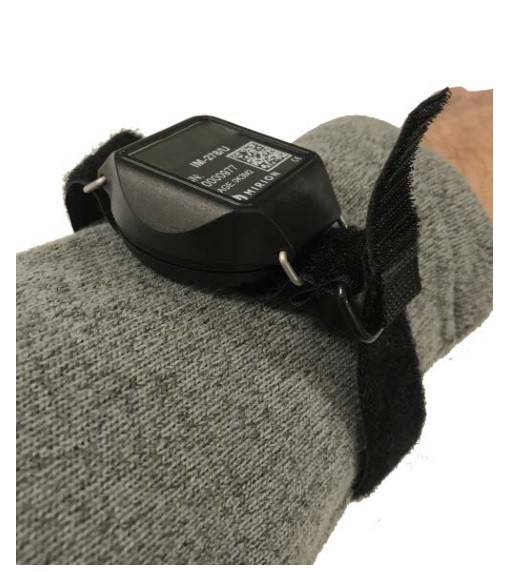
An equal-sized watch can measure gamma radiation and neutron flux. The autonomy of the main battery is 800 hours. Protection class IP67, 6 separate detectors (three - gamma, three-neutrons), cost - from $ 2000 / pc with a preliminary order of 100 pieces.
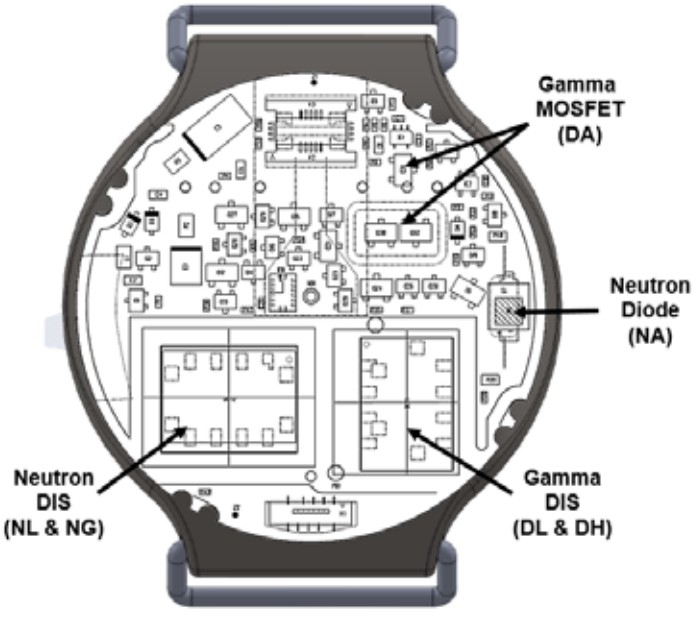

In fact, it’s not even an analogue of a watch dosimeter. It is rather a modern variation of the very thermoluminescent trinkets that soldiers once wore when liquidating the Chernobyl accident. This variation is based on a detector using an ionization chamber with direct ion accumulation (DIS). In essence, it is an analog EEPROM placed inside a gas-filled ionization chamber. The principle is in the picture below:

Don't like DIS? "Polimaster's out of stock"? Then there is, for example, MTM Special OPS BLACK RAD TITANIUM for 114200 Russian rubles.
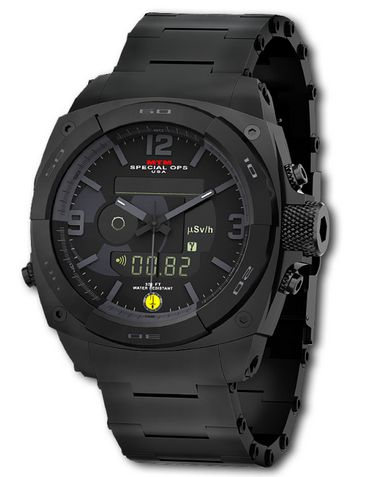
I will not sin on plagiarism, because I completely admit the option of transferring the reference design (I took the Polimaster & Luch & Integral design from Casio Databank). In general, the watch is almost an exact copy of the PM1208. Only the maximum recorded DER (4.0 mSv / h versus 9.9 for PM1208) and battery life (2 ... 3 years versus ~ 1 year) differ. Well, a strange choice of indicator color (transparent numbers on a black background) for the dosimeter. But for 114200 RUR you can tolerate :)
The hourly form factor haunts some enthusiasts (especially steampunkers ). An example is the prototype. "Nanit" from MadOrc (on Atmega88 / Atmega168 / Atmega328 - in fact, the shell in the form of a clock for a "dosimeter with a radio cat" )
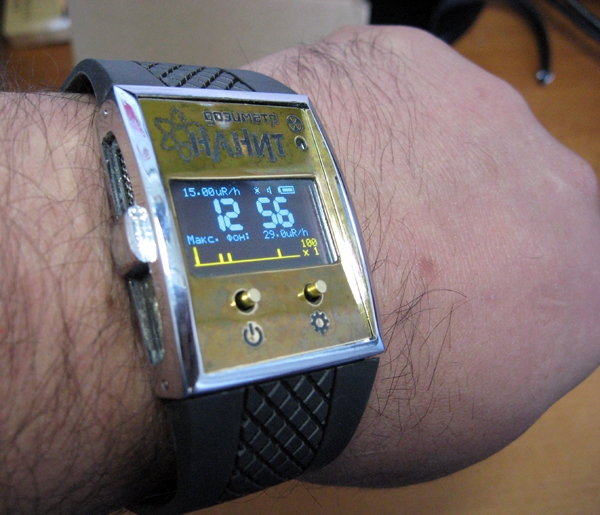
Moreover, judging by the insides, it is quite comparable to the Polymaster PM1204
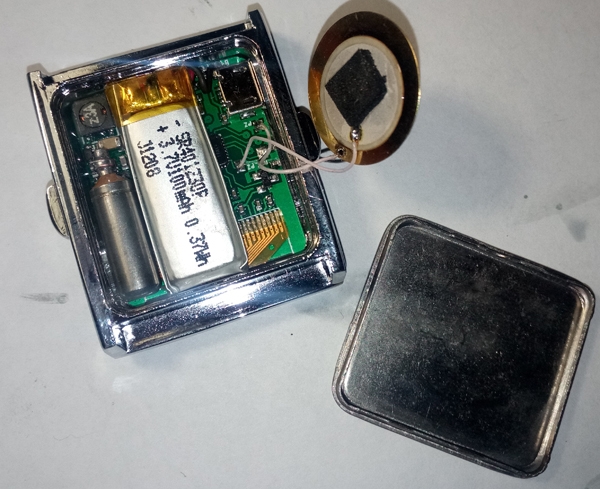

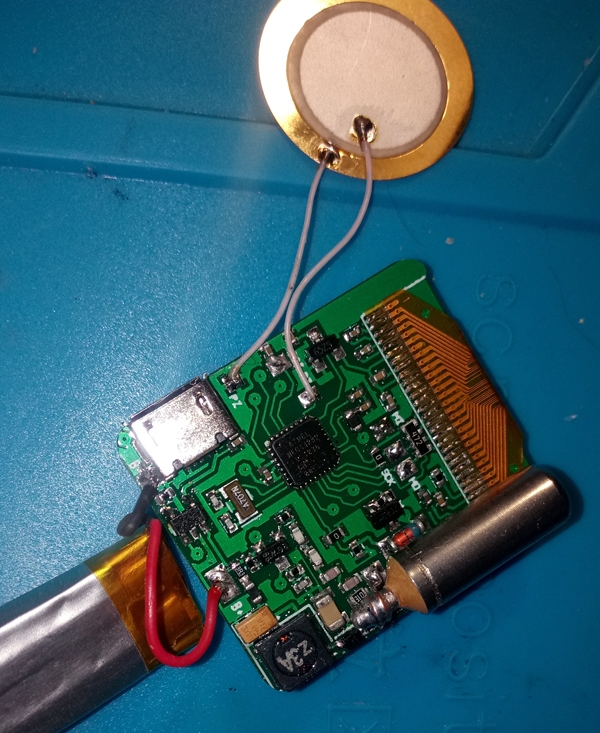
But, unlike the PM1204, Nanit boasts flexible settings for different counters, an OLED display and a bunch of all kinds of functions (which, to be honest, are not available even in modern PM1603B, yeah). Naturally, here you have neither the State Register, nor any IP67 there, and judging by the author’s comments, it’s rather an analogue of the mentioned “Rocket” watches (ie, strictly a single copy, for checking “can I?”)

From the inside, MBD-2 suspiciously reminds me of the first PM1204 (mainly because of a bunch of different types of batteries)

To compare the inside of the PM1204 with greetings from the 90s:

And so MBD-2 harmoniously looks on a hand:

An equal-sized watch can measure gamma radiation and neutron flux. The autonomy of the main battery is 800 hours. Protection class IP67, 6 separate detectors (three - gamma, three-neutrons), cost - from $ 2000 / pc with a preliminary order of 100 pieces.


In fact, it’s not even an analogue of a watch dosimeter. It is rather a modern variation of the very thermoluminescent trinkets that soldiers once wore when liquidating the Chernobyl accident. This variation is based on a detector using an ionization chamber with direct ion accumulation (DIS). In essence, it is an analog EEPROM placed inside a gas-filled ionization chamber. The principle is in the picture below:

Don't like DIS? "Polimaster's out of stock"? Then there is, for example, MTM Special OPS BLACK RAD TITANIUM for 114200 Russian rubles.

I will not sin on plagiarism, because I completely admit the option of transferring the reference design (I took the Polimaster & Luch & Integral design from Casio Databank). In general, the watch is almost an exact copy of the PM1208. Only the maximum recorded DER (4.0 mSv / h versus 9.9 for PM1208) and battery life (2 ... 3 years versus ~ 1 year) differ. Well, a strange choice of indicator color (transparent numbers on a black background) for the dosimeter. But for 114200 RUR you can tolerate :)
Addition from an insider : in fact, the device is manufactured by order of MTM at the same factory in Southeast Asia, where Polimaster manufactures PM1208M
The hourly form factor haunts some enthusiasts (especially steampunkers ). An example is the prototype. "Nanit" from MadOrc (on Atmega88 / Atmega168 / Atmega328 - in fact, the shell in the form of a clock for a "dosimeter with a radio cat" )

Moreover, judging by the insides, it is quite comparable to the Polymaster PM1204



But, unlike the PM1204, Nanit boasts flexible settings for different counters, an OLED display and a bunch of all kinds of functions (which, to be honest, are not available even in modern PM1603B, yeah). Naturally, here you have neither the State Register, nor any IP67 there, and judging by the author’s comments, it’s rather an analogue of the mentioned “Rocket” watches (ie, strictly a single copy, for checking “can I?”)
In addition to the legendary line of watches, the company Polimaster produces a huge list of radiometric iron. It would even be more correct to say that basically the company produces iron for the B2B segment (" business for business "), declaring itself 20 years ago with the help of the mentioned PDM-2 and watches for the B2C segment (aka " business for consumer "). Well, I, as well as an ordinary reader of a hubr, are of little interest in all kinds of portal monitors and kilogram radiometers for customs. We would have something personal, but with the functions of adult appliances. And here I had to collect information on crumbs. The reason is that the most interesting fixtures, as a rule, do not go beyond the scope of prototypes or ultra-small series. Therefore, I sincerely hope that the company will have enough time and energy to open at least a small museum of its "technical creativity" open to outside visitors and put as a caretaker one of the old seasoned developers who could answer the most tricky technical question. Because over the 20 years of Polimaster’s existence, many of these “prototypes and small series” have accumulated a lot that can please the eye of every radio amateur and RAD-DIY-era :)
For example, a miniature Geiger counter in the form of a usb keychain. It would be possible to reduce the price of a Geiger-Muller counter and a device in every house ... And so, everything settled on a prototype (by the way, despite the abundance of home-made dosimeters, I don’t remember something in the flash drive’s case,

Or a portable prefix to the “lead house” (I suspect that the Marinelli vessel should be in the kit somewhere nearby). The device, by the way, is designed specifically for the needs of the "Japanese peasants" in their fight against the "offensive" of Fukushima (which is confirmed by software only in Russian and Japanese).

And how do you like a telephone dosimeter (note that the phone is under the Mio brand)? I specifically searched for information on the phrase "telephone dosimeter" and did not find anything (except for mentioning the DO-RA project on Habré, but so far there is "everything is complicated" ...). The Polimaster prototype telephone radiometer had a scintillator on board as a detector. The device existed with scintillators of two sizes: small gamma / neutron (in the photo - it was he).

And with a large gamma detector (about 15 cm 3 ) - most likely the same as circled in the photo (brand of this "miracle phone", if someone suddenly needs it - PM1801):

In fact, these devices are not a full-fledged radiometer, but rather a spectrometer-pager-identifier with a link to the web system, a prototype of the current SPRD (English Spectroscopic Personal Radiation Detector - a hi-end dosimeter spectrometer, i.e. a device with identification function nuclides) with the support of the interaction of personnel in the field and the command center (in the photo A. A. Antonovsky with his favorite, by the way, it was A. A. who invented and embodied many unusual devices in iron, which is probably why he tried to present his creations himself at numerous exhibition x).

The phone allowed not only processing and visualizing detector data, but also supplementing them with video, audio, geolocation, giving the employee chains of instructions, templates for taking measurements, documenting incidents, etc.
Or do you like a traffic police stick with a built-in dosimeter on passive logic (= no microcontrollers, firmware, etc.):

Enlarged markings so that the country knows its heroes.

What is this thing? Dosimeter camera? Dosimeter-photo exposure meter?

hint
In terms of functionality, this is the same as the phone, but a little earlier. Those. in fact, this is a prototype of some of the current SPRD, but in the form factor of the camera.
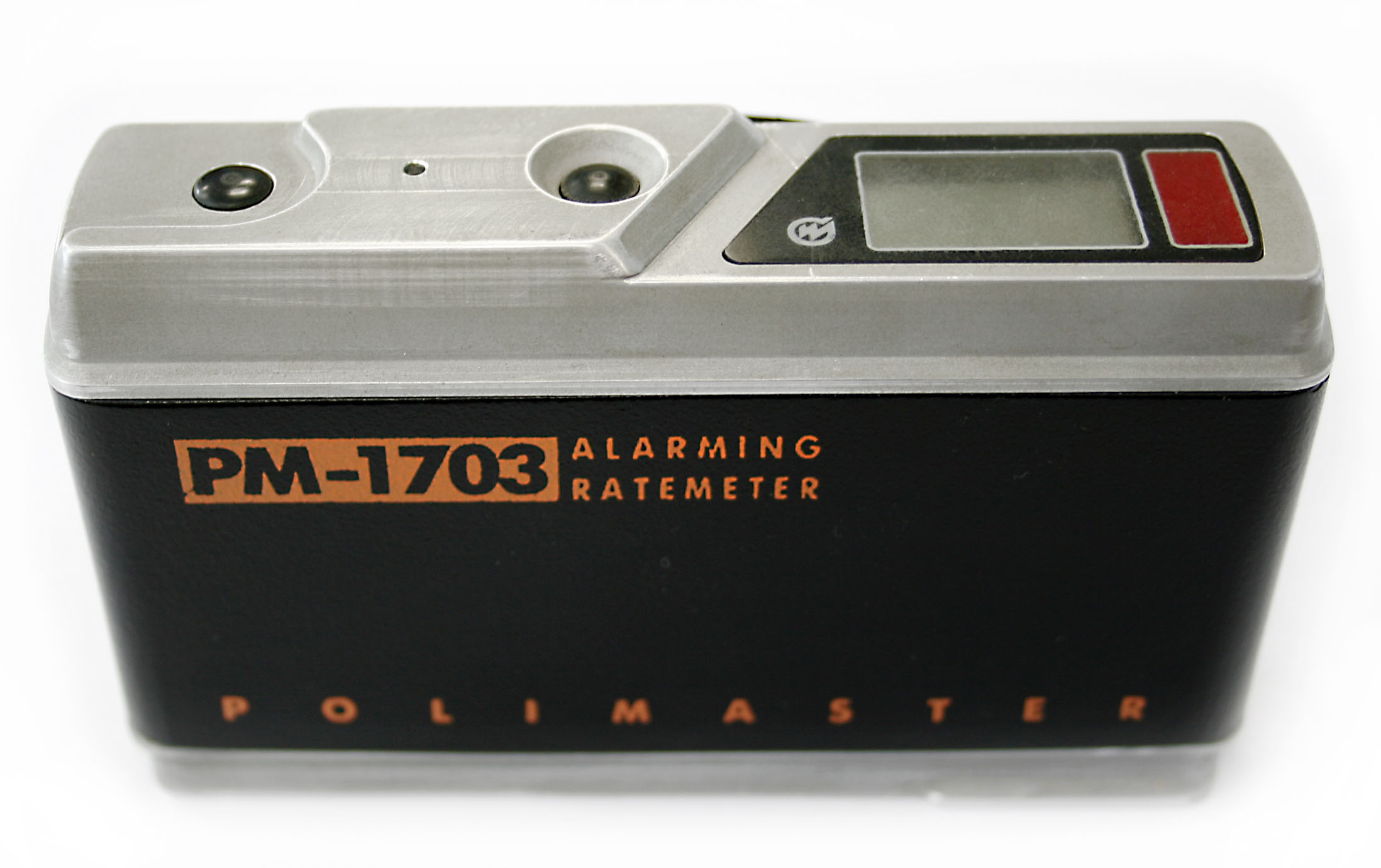

Honestly, if without looking to poke a finger at the scattering of devices, then even offhand it is difficult to say what additional functionality will be hidden in the Polymer prototypes :)

Even sweeter for the amateur eye is the unofficial developer museum. There are crafts and prototypes there, often much more interesting than those that went into the series and appeared in the form of releases on the offsite.
in such museums one can trace the evolution of technical thought
Most importantly, all as is, without the ubiquitous sealing compound.
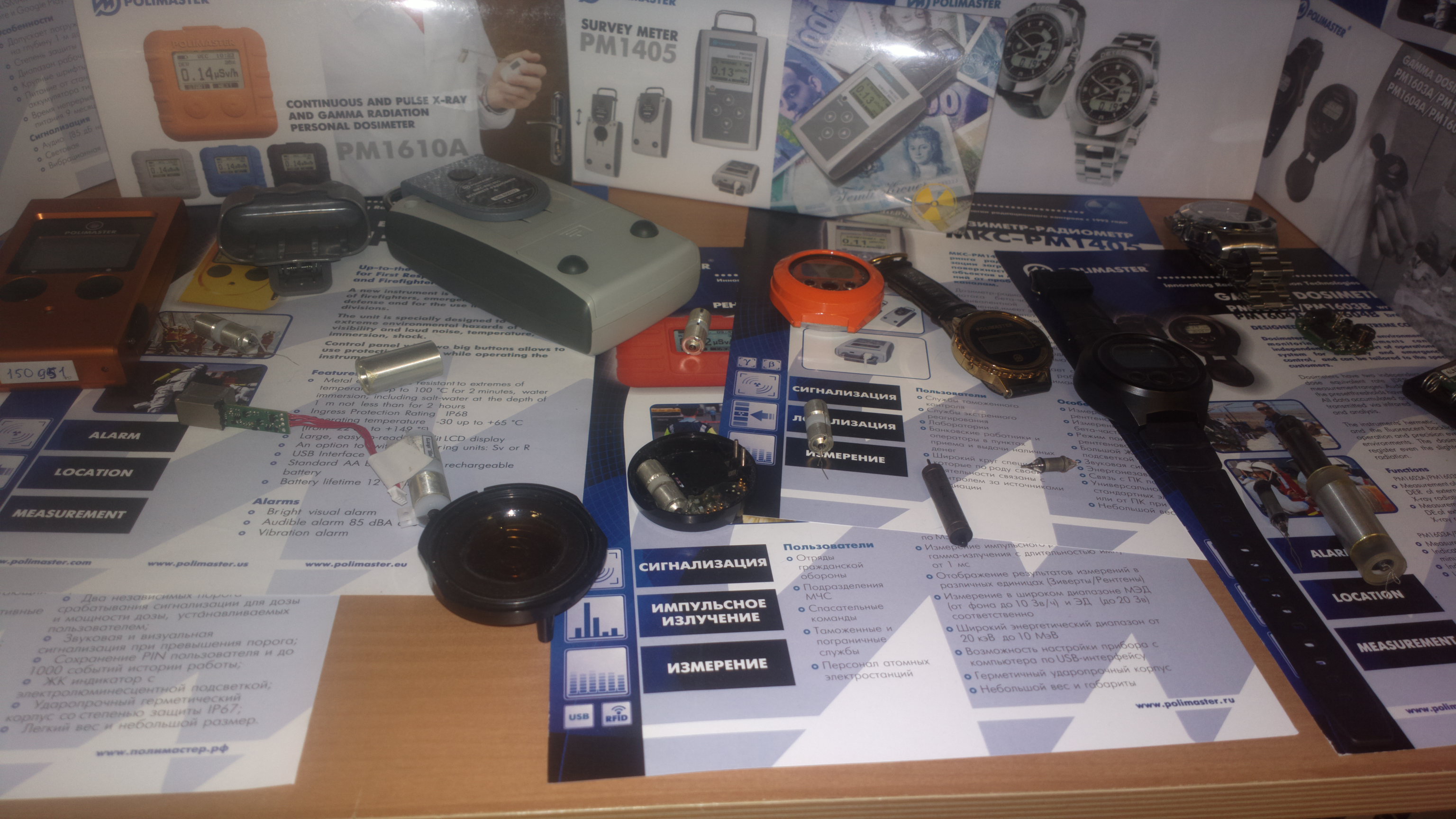
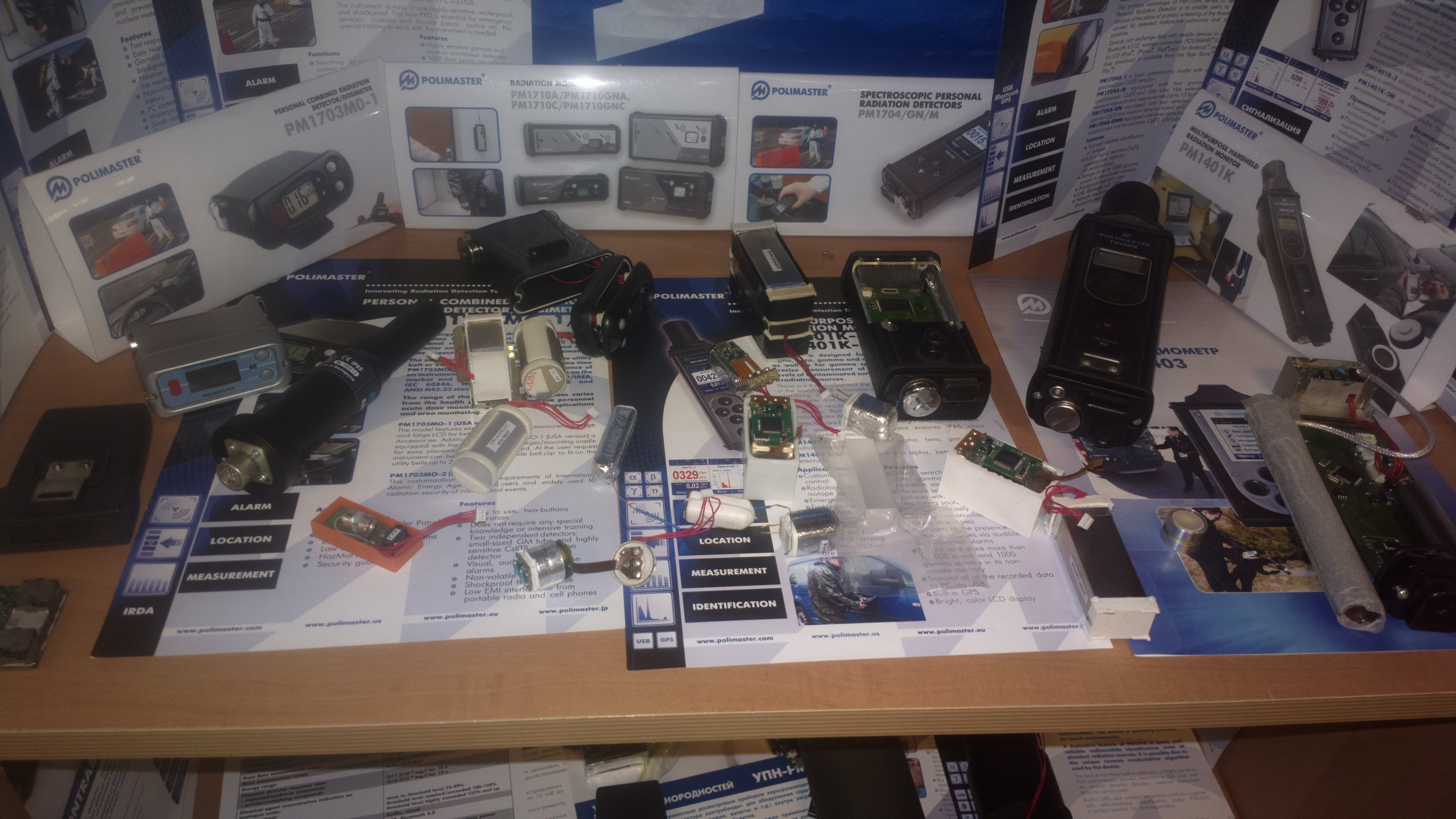


It is not surprising that looking at all this, I very clearly understand that in my native Belarus there are not many technology companies that a) have authentic traditions of electronic production and b) these traditions have been preserved and, most importantly, have increased. Repeatedly faced with the search for components, or even just a schematic diagram of some device produced on our supposedly legendary Integrals, Belvaras and Horizons, I received such a “vaccination against questions” that would last for the rest of my life. What is the answer “yes, once did. but it is not known who did this and by what documentation. nobody stores and remembers such things. ” It seems that people are sincerely proud that “out of sight - out of mind” the Soviet heritage and joyfully collect the designers from Chinese parts and stick a label with their name on them.
A photo that has become a meme to describe the current state of Belarusian state electronics 

Well and smoothly from this it follows that most often the overpriced is charged with the shortcomings of Polimaster dosimeters. But we pay, among other things, for preserved traditions. True and iron (as well as sensitivity, appearance and blah blah blah) with other local players is difficult to compare. Take the Belarusian ATOMTECH, who is sitting tightly at the state order, so in my opinion there’s nothing to see there. Thirty years have passed, and the dosimeters are as angular as if from under an ax
Well, what is $ 300 for a "dosimeter from Polimaster," when they offer me, from the Soviet preservation, another SI-8B for $ 270 to extend the functionality of my old RKSB dosimeter. What about Beta 1 for $ 150? With such prices for mica counters, it is not surprising that Aizon disappeared :)
In the case of "polymers" we pay for manual assembly, manual verification, manual verification / calibration. The guys slowly and with pleasure collect the best dosimeters in the world :)

By the way, I’ve been thinking for a long time how to make such ventilation for soldering work. 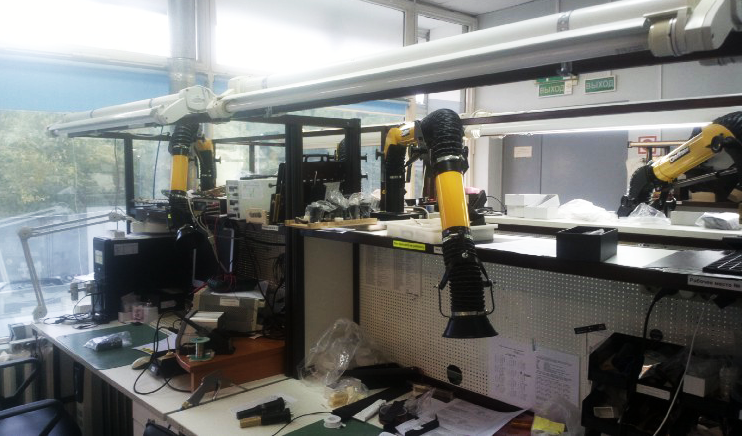

True, a handicap also leads to a more critical drawback for the potential user. Manual assembly - implies small series of products. Those. it is useless to break off the phones of the company; these unusual dosimeters cannot be obtained at retail. Only avito or a few dealers in Russia (and even in Japan). Surprisingly, it will be cheaper to order a Belarusian dosimeter from a Japanese auction than to find it in Belarus. The main reason is the low retail demand , which does not cover the retail license.
By the way, since I’m talking about the assortment, I’ll allow myself a small FAQ (based on the questions that “dosimeter seekers for myself” periodically asked me).
Small semi-official Q&A on the range of equipment
Q : the most interesting IMHO device that I would buy if I had unlimited credit. and why exactly he
A : there is such a thing, a search meter-signaling device ISP-PM1703GNA-II MBT

It is interesting in that it carries three types of detectors: a scintillator on CsI (Tl) - responsible for working with gamma radiation, a Geiger-Muller counter - for measuring DER and ED, and finally, a LiF / ZnS / LiI (Eu) detector for determination of neutrons. At the same time, it is a compact, direct indicating device, IP65 case, powered by AA. It is also interesting that in this class of devices, the function of isolating breaks into natural nuclides ( 40 K, 228 Th, etc.) is implemented, i.e. you can not only discover the source, but also give an initial conclusion about what kind of source it is. Although, it is believed that his ancestor, the search dosimeter DRS-PM1401, is much more sensitive (with the same scintillator size). Take note of all the "flea market seekers" of the Soviet SRP-68-01. PM1401 will be much more efficient (and easier), at the same or even lower cost in the secondary market.
Q : Is there anything that measures all types of ionizing radiation?
A : The most suitable option - PM1401K-3 - is equipped with built-in detectors of alpha, beta, gamma (CsI (Tl) and neutron (based on a 3 He counter) radiation (developer note - 1401K-3 is already equipped with a neutron detector LiF + ZnS ). There is a search mode, a mode for measuring the specific / volumetric activity of the 137 Cs radionuclide, as well as identification of the radionuclide composition of the substance. Nutrition - two AA elements. I could be wrong, but smaller in size than polymaster, there are no such devices in the world. The price, however, is SPACE. But the option "written off with custom "can save the father of Russian democracy ...
... and a traditional remote wrist vibro 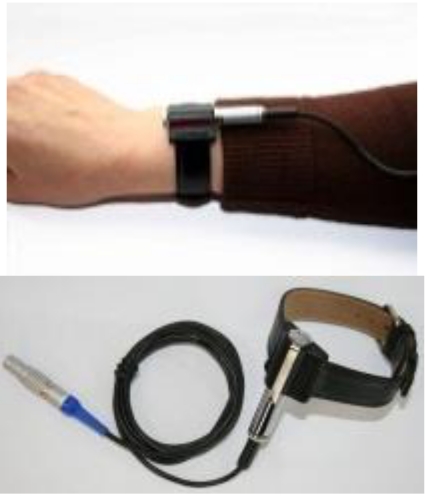

Q : A device for a city dweller?
A : this is probably an individual DKG-PM1904A dosimeter (reminds me of old BT-GPS like Nokia LD-3W ). Measures DER / ED by gamma, transfers everything via BT to a smartphone. It can identify the excess level and signal about it (a kind of "blind dosimeter"). Powered by a built-in battery. Compatible with iPhone / Android.

Q : What do company employees advise?
A : Employees are of the opinion that for an advanced layman it is better not to directly show the DKG-PM1300 dosimeter.
Energy compensated pin diode , one AAA battery, visual / sound / vibration indication when thresholds are exceeded. Measurement ranges: ED - 1 μSv-20Sv, DER - 1 μSv-10 Sv. Internal non-volatile memory for 50,000 events, RF + USB data transfer channels, connection via a sealed contact group (IP68 after all, the approach, by the way, is similar to that used in my favorite Magellan Triton 2000 tour navigator ).

“What dosimeter to buy? What about you? "
Well, finally, I came to the answer to the “main question of life, the universe and all that” :) :) As I promised, I will tell you in detail about the version of the dosimeter that is with me everywhere. Having earned the first penny on assembling computers to order, I clearly realized for myself that there is no thankless job than giving advice on choosing a computer configuration to a person who had never had a computer before. In any case, then it turns out that you picked up a bad configuration. The situation is similar with dosimeters. Keep this in mind,% USERNAME%, and do not judge strictly.
For me, as a practicing sports tourist, new technologies are in most cases total miniaturization, energy saving and indestructibility (read outdoor-ness). It concerns practically all field equipment, without exception, for a dosimeter. And the latter entered the list of equipment, because the Chernobyl accident abundantly enriched our blue-eyed with many "hot" spots in the forests / swamps. As already mentioned above, as a result of deep introspection, I came to the only correct answer - the dosimeter should be in hours and must be able to count the accumulated dose. The carpal dosimeter from Polimaster PM1603 B ( B - because “up to 10 Sv” ~ 1000 R, and “the supply of the uncle is not good” - says a traditional Belarusian proverb) went well with this brand .

The manufacturer itself positions the DKG-PM1603 as:
A hand-held serial professional dosimeter designed to measure ambient equivalent dose (ED) and ambient equivalent dose rate (ED) of gamma radiation in a wide range
The undeniable IMHO advantages of the device include the following:
- Protection class IP67. IP67 is “complete protection against ingress of dust” and “immersion under water to a depth of 1 m”.
IP protection class label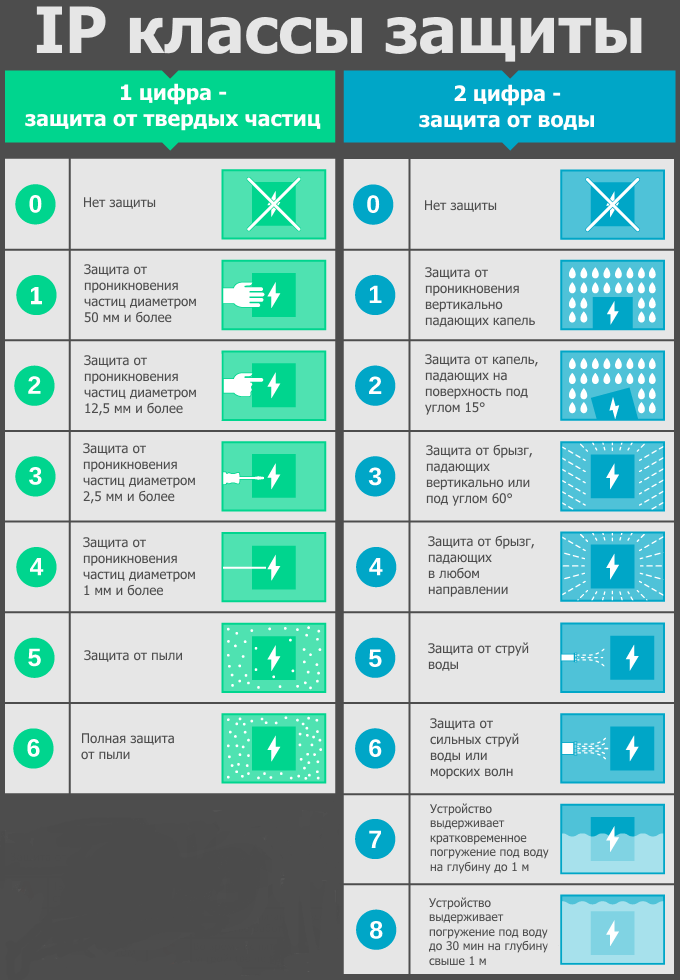
IP , (, MIL ). — , (= , , , ), . ( ) .
- -, . 1603 0,01 / 5 / (~500 /) , 10 / (~1000 /) B . «» ( ). 1000 ( 500 -PM1208) -
- They have a sufficiently high radiation resistance. Factors affecting the sensitivity of electronics to radiation are the large length of the circuit circuit and the lack of devices that control power. In the case of PM1603B, there is no corny load on a small circuit with one controller and there is overload protection. Plus, each polymaster device undergoes a real “gamma test” at a real stand (with real radiation, not some computer models there).
is it like that?:
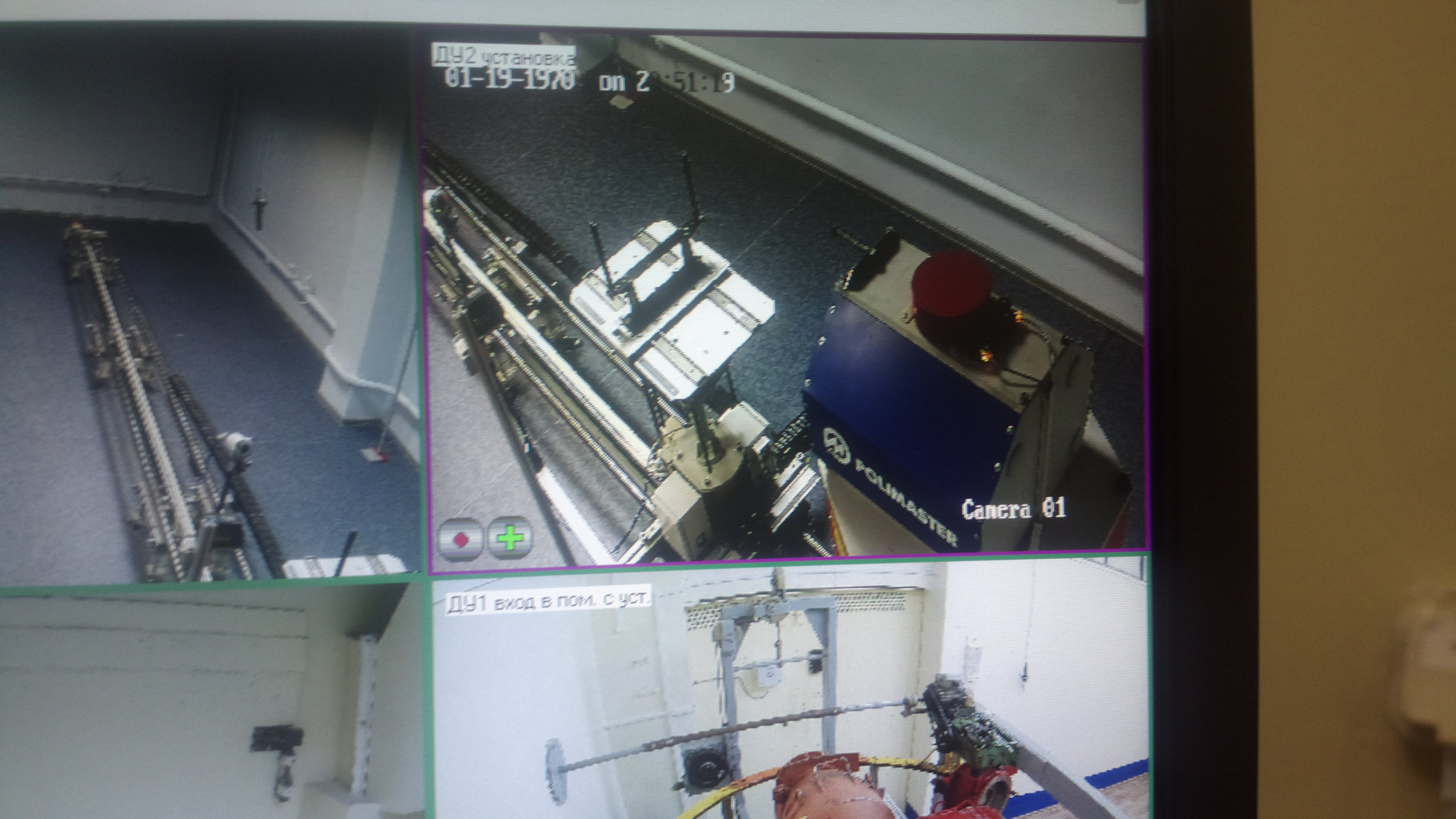

- The dosimeter has an alarm function, which is triggered when radioactive radiation is registered, above the established norm at two levels.
Remark about setting thresholds? (= ) - = 0,30 3/ (= 0,30 uSv/h) 30 . , . Those. -: =< 0,30 /. 0,3 /. — 0,5 /, . (= ). , - , - ( , ), . Those. ( 0,10 3/) 1 / 10 . , 1 / 10 , 10 . « ». , -: =< 0,007 . (, ) . 0,007 = , . , , . , .
And now, the noticed shortcomings , where without them:
- 1 /, 0,1 0, 25 0,33 / . 1603B (, , ..). . — , 5-10 , — 15-20 .
- , , . , , PIC18LF6490 . LND-714 North Optic J705 (~20$/) cpm 10. , , , . 10 / ( 1603 )
- The clock periodically signals the nightly exceeding the set threshold, which may indicate that the high-voltage converter of the dosimeter does not have stabilization. At night, the background is lower, and rare counter operations lead to an increase in the voltage across the filter capacitor, going beyond the counter plateau and breaking the latter into relaxation mode.
Comment from the developer : you need to look at this case in detail, but the point is definitely not in the high voltage. In this watch there were versions of a high-voltage converter with a mid-point, for voltage control by feedback, and without it, but with voltage control by “secondary sexual characteristics”. Most likely the reason is the statistics reset algorithm.
- The infrared port is very demanding on adapters (I will tell you about this separately) and the lack of any ability to communicate with the dosimeter in the * nix / MacOS environment (I'm not talking about any Android with IrDA). Only Windows,
only hardcore. And on Windows, to the heap, there is also the need to install mysql and all sorts of redistributable c ++. There is also no separate utility for configuring dosimeter settings (although it might well be that the installation of a gigabyte package would not be required).
- There is no sound indication of decay registration. The piezodynamic only works when thresholds are exceeded (well, on the alarm / timer / stopwatch). The same PM1208 could work in the "search" mode, i.e. give sound signals when registering gamma radiation, the repetition rate of which increased with increasing DER. Plus there was an analog ED / MED scale in the form of circles / arcs. In fact, this is a certain analogue of the arrow of the device in DP-5. For example, the same mentioned Steampunk NANIT uses a schedule for this purpose. For “polymers”, this scale should have played its role. But I have the so-called The “analog DER scale” did not work from the word at all. Seven of its segments identify (should at least) different threshold ranges of DER: from 1 to 7, respectively - ≥1 μSv / h; ≥2-10 μSv / h; ≥100 μSv / h; ≥1 mSv / h; ≥10 mSv / h; ≥100 mSv / h; ≥1.00 Sv / h. No matter how much I try, nothing is displayed.
lift my eyelids, where is this scale?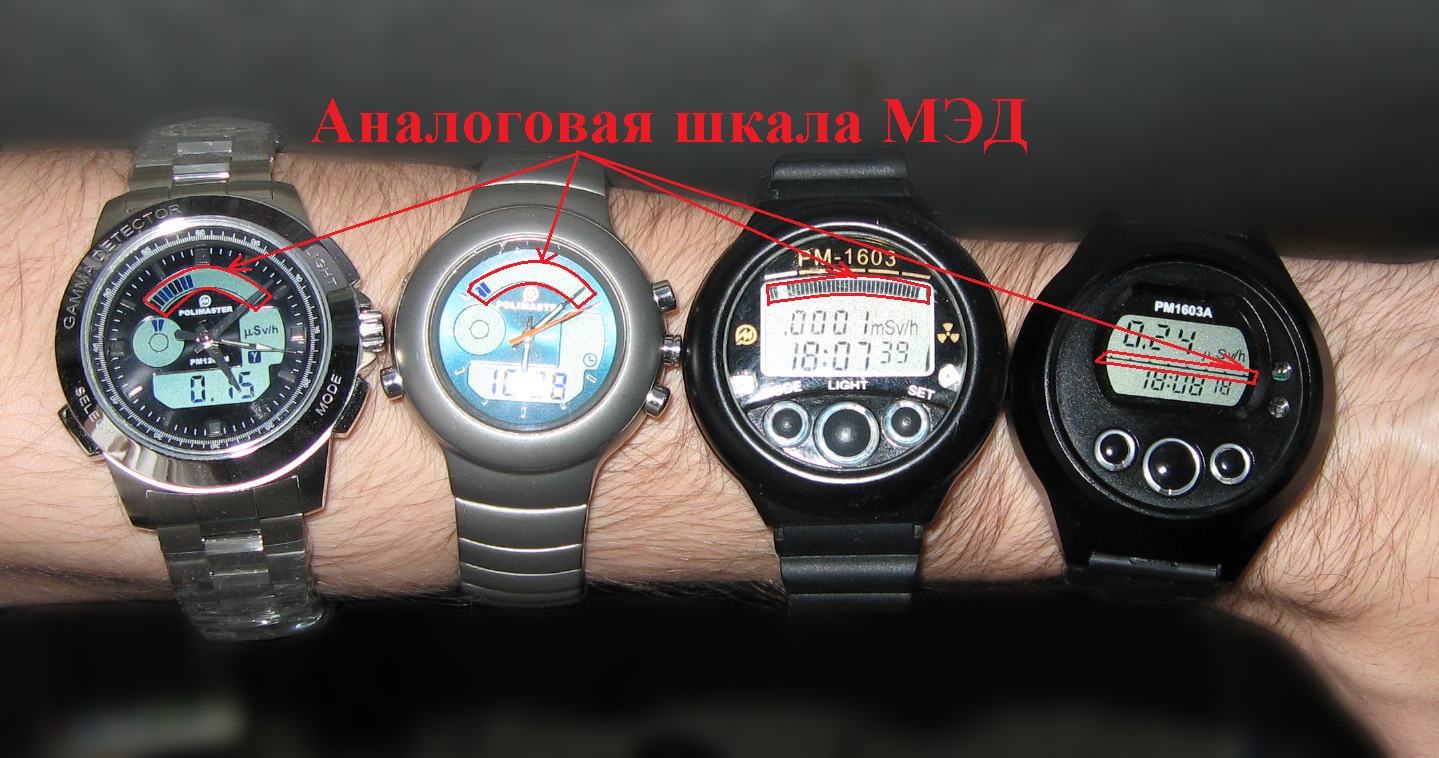
Of course, the question of activating this function through software on the PC remains open. Later, when the necessary hardware (IrDA adapters of all stripes) will be on hand (= will come from auctions) I will talk about the features of IR communication with PM1603B and the possibilities that this connection reveals with the dosimeter. Because it is the IR channel that is actively used by the company's developers in the production, configuration and calibration of devices (which means that the possibility of customization is hidden somewhere). However, due to the fact that in the CIS there are many restrictions on measuring instruments, the manufacturer is trying to make sure that all the functions of his device correspond to those described in the OM. To please the “place in the State Register” what to do, the excessive functionality is hidden.
- The instrument averages the readings in about 40 minutes. You can reset the measurement time (press the extreme buttons at the same time) - and see in the 1st second the average value for this second, in the 2nd second the average value in two seconds, in the third second - for the last three, etc. up to 40 minutes. That is, once in a place with an increased background, you will have to wait a very long time for changes in the readings on the screen. But you can reset the readings with the extreme buttons and immediately get the information you need. Naturally, the shorter the measurement time, the greater the scatter of the results, i.e. immediately after the reset, the results jump noticeably, and with increasing measurement time, this difference between adjacent values is smoothed out. At the same PM1208, the time for establishing readings during registration of the natural radiation background (0.1-0.2) μSv / h after exposure to DER radiation above 1 μSv / h or restarting the processor was no more than 360 s .
Comment from the developer : in fact, the device does not bind averaging to time. The device works with the so-called "statistical pyramid", filling it with information from incoming pulses. Those. the more pulses there are, the faster the sane readings will be obtained (= setting the measurement time in inverse proportion to the dose rate). At near background values, this is indeed about 40 minutes. Energy efficiency is also associated with this (see next paragraph)
- PM1603B, according to user reviews, in a relatively high background very quickly consumes battery life. This is due to the fact that the inverter for the Geiger-Muller counter is made on a throttle. If you bring the clock to your ear in silence - you can hear them ticking, the inverter works, it gives “standby” power to the counter with pulses once a second. After each operation of the counter, an “extraordinary” power pulse is generated, so that with large DER values, the battery will drain much faster (if you expect to spend the night near the epicenter of a nuclear explosion, better put a fresh battery). Under normal conditions, the battery life for 1 1603x model is 9 months.
About PM1603B and Kursk submarine
In response to “gobble up the battery in radiation conditions,” there is a small story. Probably a few people are aware that in 2000, after the accident on the Kursk submarine, PM1603 was used as the most suitable for such harsh conditions (autonomy + recording the history of background changes) to study the radiation situation in the reactor compartment area. Moreover, the decision that the most suitable option is Belarusian was made at the Russian Navy Shipbuilding Research Institute without any external pressure and prompts. Four "polymaster washers" were delivered by the MIR-2 bathyscaphe and installed in the area of the reactor compartments of the submarine. However, due to insufficient visibility, only half of the dosimeters were recovered; the remaining specialists removed it at the shipyard in Severodvinsk, after the submarine was lifted. The most interesting thing is that the dosimeters worked ... Despite the fact that more than two years have passed, not to mention the pressure, temperature changes and mechanical stresses associated with raising the boat ... Conclusion - the Course did not find such strong sources to use up the lithium batteries of the Belarusian watch.
In addition to the disadvantages mentioned above, the main complaint among fans of watches is the dimensions of the dosimeter. Especially when you have to compare with PM1208. “The puck” is clearly wider and thicker (“well, so it has a measuring range not of 1 X-ray, as in PM1208, but a whole 1000”):

Well, the thickness, so as not to be unfounded:

Honestly, I, as a tourist, have long liked the Casio ProTrek format, and therefore the PM1603B, which is not much behind them in terms of size, is quite suitable. In addition to the clock form factor, there is also a complete analogue, in the form of a dosimeter on a clip - model PM1604.
And there is a model 1604vW and NOT on a clip, but in a beautiful orange case for greater visibility 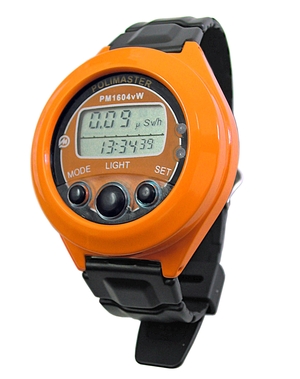

But 100% - in a week you get used to any size of watch :) On a woman’s hand or a child’s hand, most likely, the watch will look heavy. But the children are unlikely to be actively working near the reactor core (namely, employees of such a plan are the main focus group for PM1603B). But somehow the watch looks “on the road” on the skinny hand of a Belarusian navigator.

It is worth recognizing that the “firstborn in the ProTrek format”, the PM1603 was smaller than the subsequent PM1603A and PM1603B and more rounded or something + a duralumin cap (it was later replaced by stainless steel). The resolution of readings is 0.1 μSv / h, one threshold, the upper limit of the registered DER is 5 Sv / h (i.e., about 500 R / h) of the additional options - an alarm clock. What else touched in the remake is the Japanese strap. It's nice that Casio traditions are sacredly honored:

And always a harsh reminder on the back cover. So that the owner rarely makes a reservation and does not call the dosimeter for hours how much in vain. Not enough engraving :)

Now, regarding the comparison of SIG-PM1208 and PM1603V . PM1208 - thinner, but noticeably heavier. As I said, there is a function of voice acting for each pulse from the counter with a beep signal. It is strange why it was not possible to make this function in 1603 (at least disconnected). Probably, this is the case as it is, also because many regulatory documents PM1208 and PM1603 refer to different classes of equipment. The first is for indicator indicators (and the upper limit of indication is 0.01 Sv / h ~ 1 R / h), and the second is for dosimeters (up to 10 Sv / h). The difference is that indicator indicators measure the equivalent dose rate (sometimes they can measure the accumulated dose) and are not included in the State Register. And dosimeters measure the dose rate, the accumulated dose and are included in the State Register. But with all this, even the “gift” PM1208 (and PM1208M) are full-fledged measuring instruments, and not fashionable disposable toys. The claims of the people are mainly to the speed of response to the gamma background and the upper limit of the DER.
And those who upgraded their PM1208
They should “keep in mind” such a thing as going off scale even from not very strong sources of gamma radiation. Crazy sensitivity is not compatible with the correct dose calculation and will measure the potassium-40 and (and carbon-14 = sarcasm) radioactivity in your body instead of the environment background on the subway stages
Well, at the end of the comparison, the photo from @komrad_Tsankov is all from the same topic on the RKhBZ forum

What is the result?
This watch is really useful only for a person who works with something ionizing or is periodically located in an infected area (in conditions of increased gamma background), for self-monitoring of the dose received. For measuring potatoes / mushrooms (the most common philistine scenario for using radiometric devices), this product is redundant in terms of functionality / price, and simply does not fit (how can they be measured in everyday life, dear ones, in the next sections). So, definitely, the thing is working, but for “an ordinary person” (that is, “once a year a citizen with radiophobia with physical inactivity” :)) is not very useful. On a superficial examination of the amateur in the metrology of ionizing radiation, it generally seems that the PM1603 is a replacement for thermoluminescent indicators and an ID-1 dosimeter, but at a cost of $ 500.
A few words about this penny ID-1, familiar to many from the lessons of civil defense
The principle of the electroscope works in these indicators of the accumulated dose. The design is quite simple: an iron tube, and in it a hair on insulators. The hair is charged and deviates slightly to the side. From radiation, he begins to lose charge and deviates closer to the starting position. All this is observed through a division microscope. The greater the deviation from the freshly charged state, the greater the dose the person received.
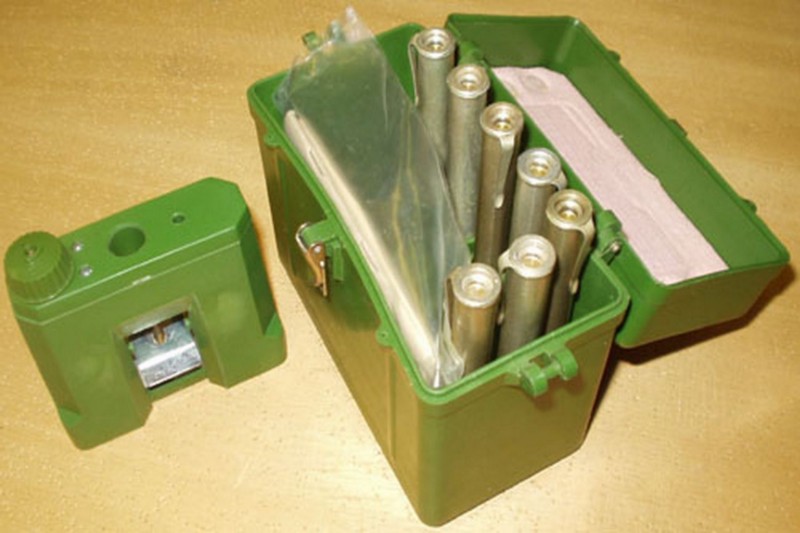

BUT ! But in our realities, this is the most affordable and reliable carpal dosimeter (I saw a video recently, when journalists visited the Chernobyl nuclear power station, peered, peered, but didn’t notice the dose accumulators, and such a product placement would be available for PM1603B, uhh). Prices in the secondary market are quite low (no one is looking for PM1603,
But in general, such an encyclopedia of Polimaster (I
<...> I got wound up yesterday Polimaster model PM1703MA <...>. It is declared as a signaling device (not a meter). However, he calculates the dose rate correctly both from the background value, and in some weak fields from the compass with a luminous arrow. Brief experiments revealed that there is a nonlinear dependence in the algorithm when calculating the dose rate and the count rate when the quanta of different energies are exposed to the detector - that is, the microprocessor of the device can analyze the pulse height, taking it into account when calculating the dose rate. A trifle, but very nice. I am surprised. <...>
Anticipating accusations of radiophobia and "panic about radiation" in advance, I will say the following. In everyday life, some things are necessary, but some are not. Everyone decides for himself, there are people who, out of principle, do not use the washing machine (“spoils things”), and at the same time there are those who consider the coffee machine the most important object in the apartment. So in relation to radiation hazard - everyone decides for himself. But between any home appliances and a dosimeter there is a fundamental difference - safety. With proper use, the dosimeter will be able to provide it, but household appliances, even with all the desire, will not. The simplest alarm device, assembled from five parts, can help to avoid fatal situations. For example, here is this case of radioactive contamination in Kramatorsk. People would have had the simplest squeaker and many would have survived and not become disabled.
The incident in Kramatorsk
The radiation incident in Kramatorsk - the exposure of residents of a panel house in Kramatorsk (Ukrainian SSR) from 1980 to 1989 with a significant dose of gamma radiation. The reason is that a lost industrial source of gamma radiation based on cesium-137 gets into the wall panel. According to various sources, the incident caused death from two to six people. Seventeen people were found to be victims of radiation exposure that exceeded the natural background, and received disability. The bottom line is that in the late 1970s in the Karan quarry of the Donetsk region, a source of ionizing radiation of the IGI-Ts-4 type was lost - a capsule with cesium-137 inside with an activity of 5.2x1010 Bq (1.4 Ki). The capsule was used in a measuring device (radioisotope level gauge) of an enterprise producing crushed stone. It was not possible to find the capsule. In 1980, a panel house was put into operation in Kramatorsk along Gvardeytsev-Kantemirovtsev Street (now house number 7 on Maria Priymachenko Street). The lost capsule, emitting approximately 1800 R / year, together with crushed stone was walled up in one of the walls of this house. Already in the summer of 1981, an 18-year-old girl died in one of the apartments, and a year later her 16-year-old brother, then their mother, died. Another family moved into the apartment, in which a teenage son died in 1987, and his younger brother became seriously ill. All the dead died from leukemia. Doctors could not establish the cause of the disease and explained a similar diagnosis with a hereditary predisposition. The father of the second family turned to the sanitary and epidemiological station with a request to check the radiation background in a dysfunctional apartment. The study revealed a dangerous level of radiation, especially high in the children's room, in the adjacent apartment behind the wall and in the apartment one floor higher. Residents of these apartments were resettled. The radiation source was localized inside the panel of the apartment block, the spread of radioactive material in the form of dust was not detected. Having cut out part of the wall, it was delivered to the Kiev Institute of Nuclear Research, where the capsule with cesium-137 was removed. The owner number was identified by the serial number. Later, the investigation found that the searches were organized unsatisfactorily. The State Nuclear Regulatory Inspectorate of Ukraine (SNRIU) considers the cause of the incident a low level of safety culture at the enterprise. By the way, after eliminating the source, the radiation level in the house number 7 was equal to the natural background.
Of course, this is a rare and egregious case. But in the modern world it is quite possible to encounter something like this when buying building materials or choosing an apartment on the secondary market (or even in general, like that ). The rescue of drowning people is the work of the drowning people themselves, it seems to be a one-time “fuss”, but the effect of it is the years of your healthy life. It’s one thing to give $ 300-500 for a set of comic books “for the soul” or “Turkey-all-inclusive for a week”, and it’s another thing to spend them on a device on which health and life can depend, not only yours, but also your loved ones. And for the residents of Belarus, the speedy launch of BelAES should not be discounted;)
That's it for now. Traditionally, "subscribe and stay tuned." In the next part - in more detail about the "household dosimetric heritage of the USSR." By the way, something may appear earlier in my Medium than on the Habré, because the editor is more convenient there :)
PS I recently read an article about the anniversary of the nuclear test at the Totsk test site (65 years ago, the USSR conducted nuclear tests with the participation of people), became interested in such an organization as the "committee of veterans of Russian special risk units." He, if that, unites all people who are:
direct participants in tests of nuclear weapons and military radioactive substances at the Semipalatinsk, Novaya Zemlya, Kapustino-Yarsky, Ladoga and other test sites;military, naval and air exercises with the use of nuclear weapons; liquidation of radiation accidents at nuclear submarines and surface ships and other military facilities; manual assembly of the central part of nuclear charges until December 31, 1961; collection and disposal of radioactive substances resulting from tests of nuclear weapons and radiation accidents at military facilities.
And in the photo of the first chairman of the committee, Vladimir Y. Benecianov, he noted the SIG-PM1208 mentioned in the article. By the way, if someone else somewhere noticed in the media something of the polymaster or described in the article - write in the comments, collect in a collection, well, and supplement the article.
PPS The article can be said anniversary, exactly a year ago, on this day I registered on Habré :)

Acknowledgments: the author thanks Lyudmila Aleksandrovna Antonovskaya for the provided photos from the personal archive and for allowing me to go to the workshops :), Julia for an open and interesting dialogue, Ruslan and Alexander for excellent technical comments. And the Polimaster company - at least for the fact that modern Belarus has it.
All Articles



